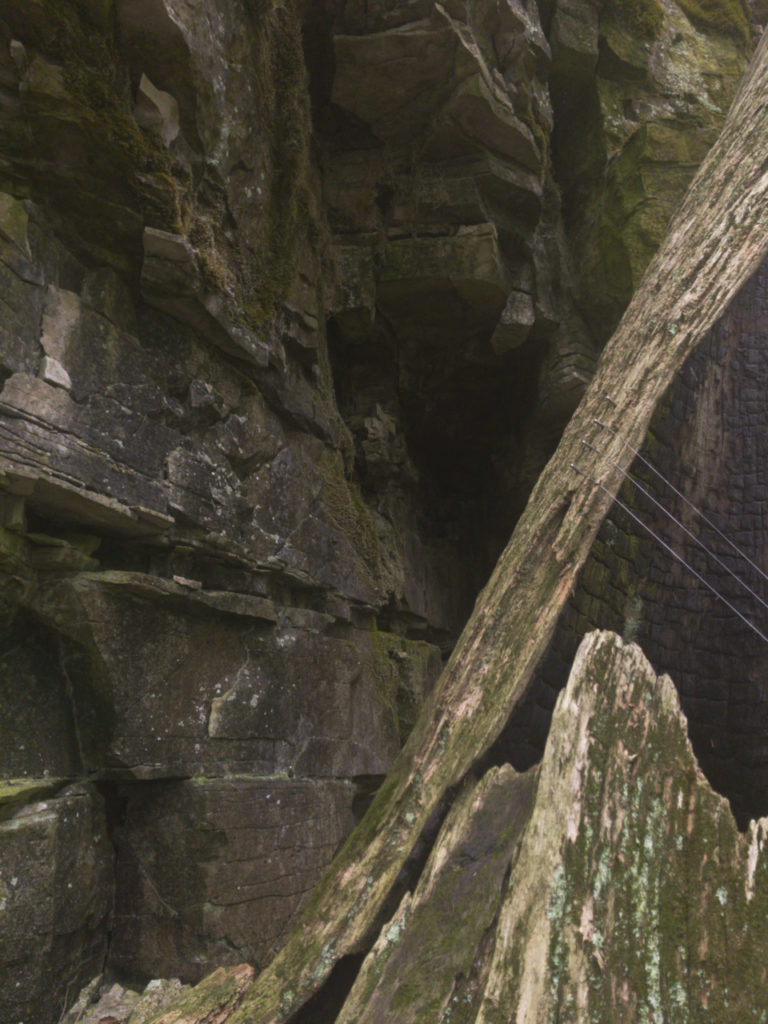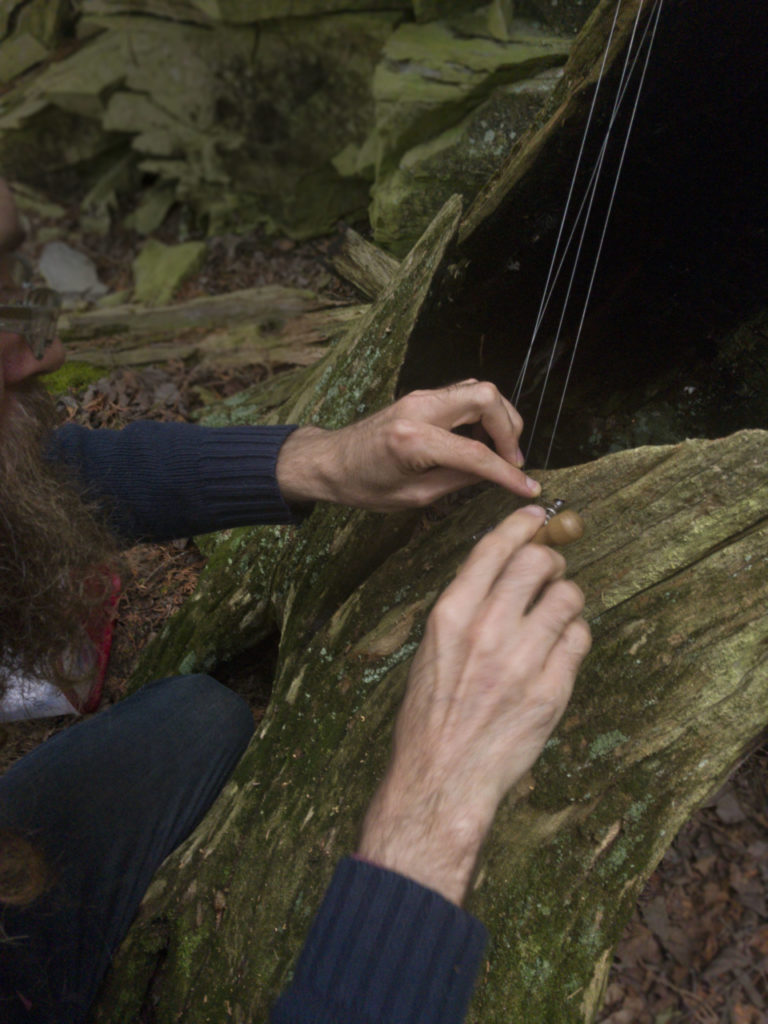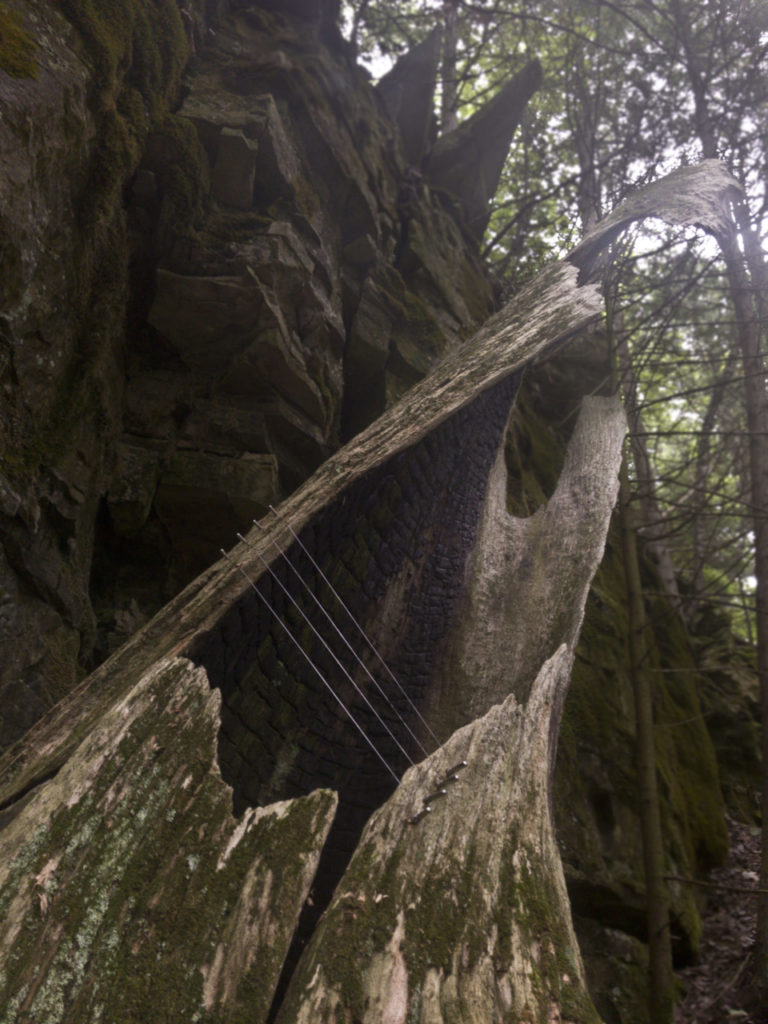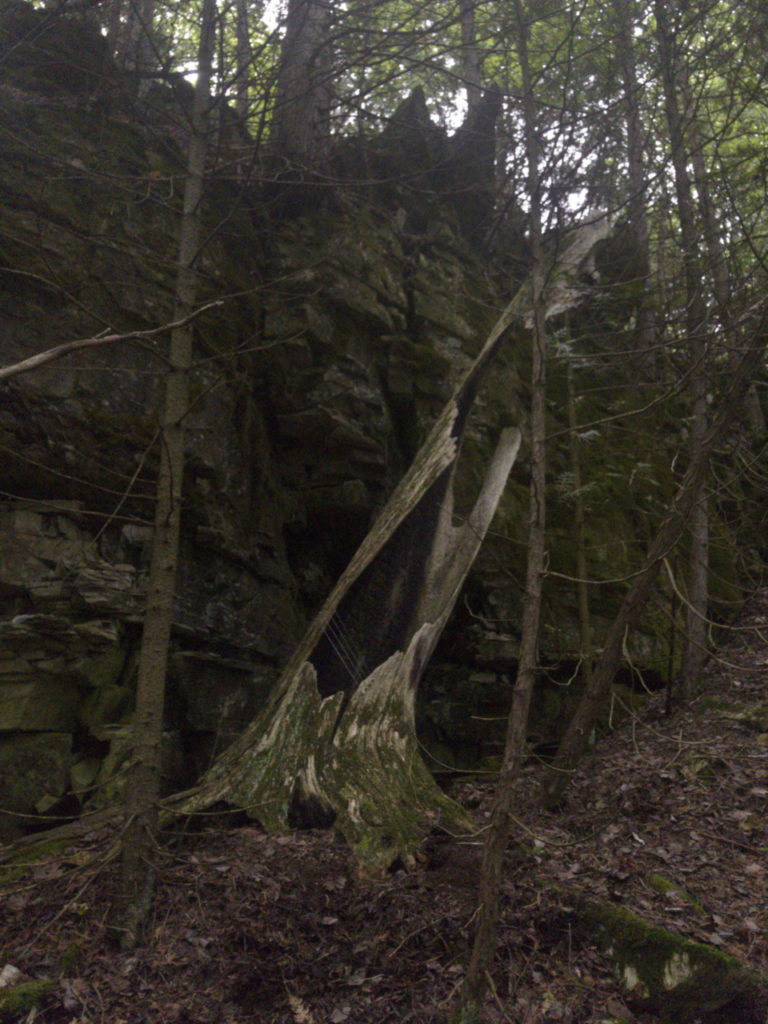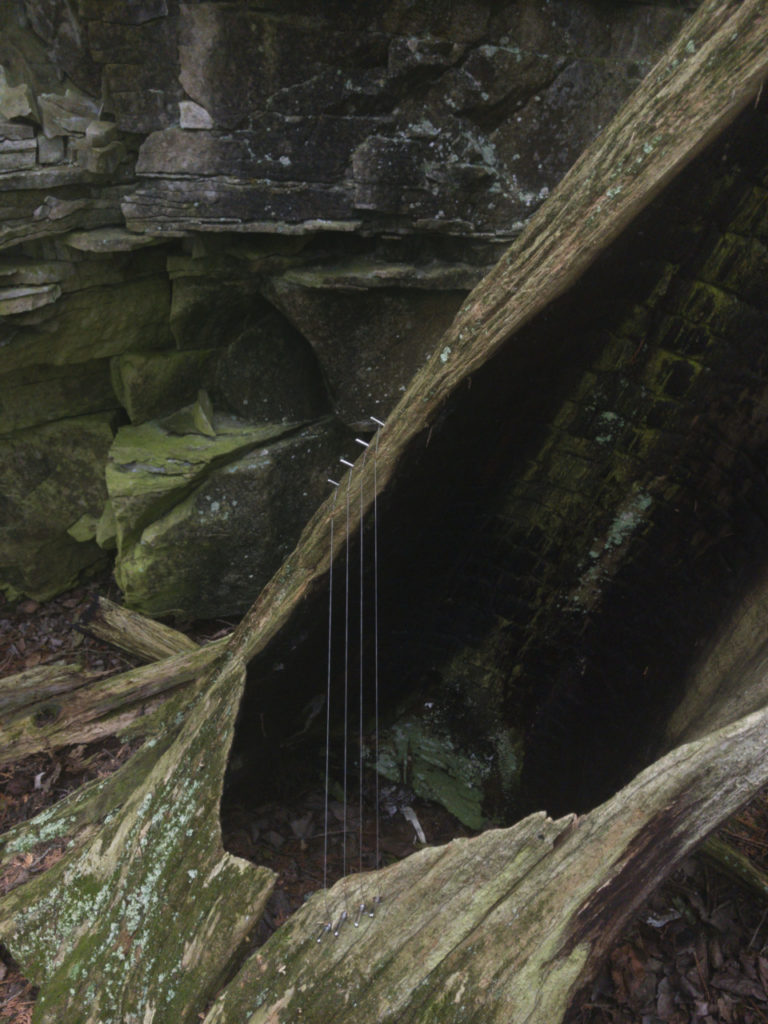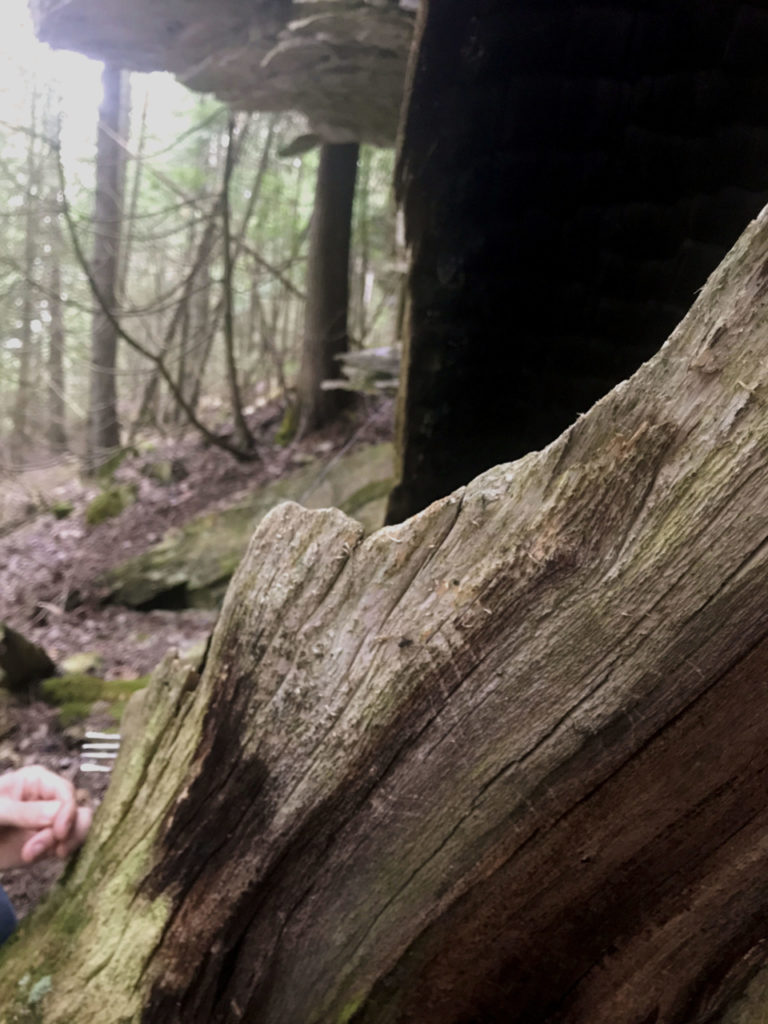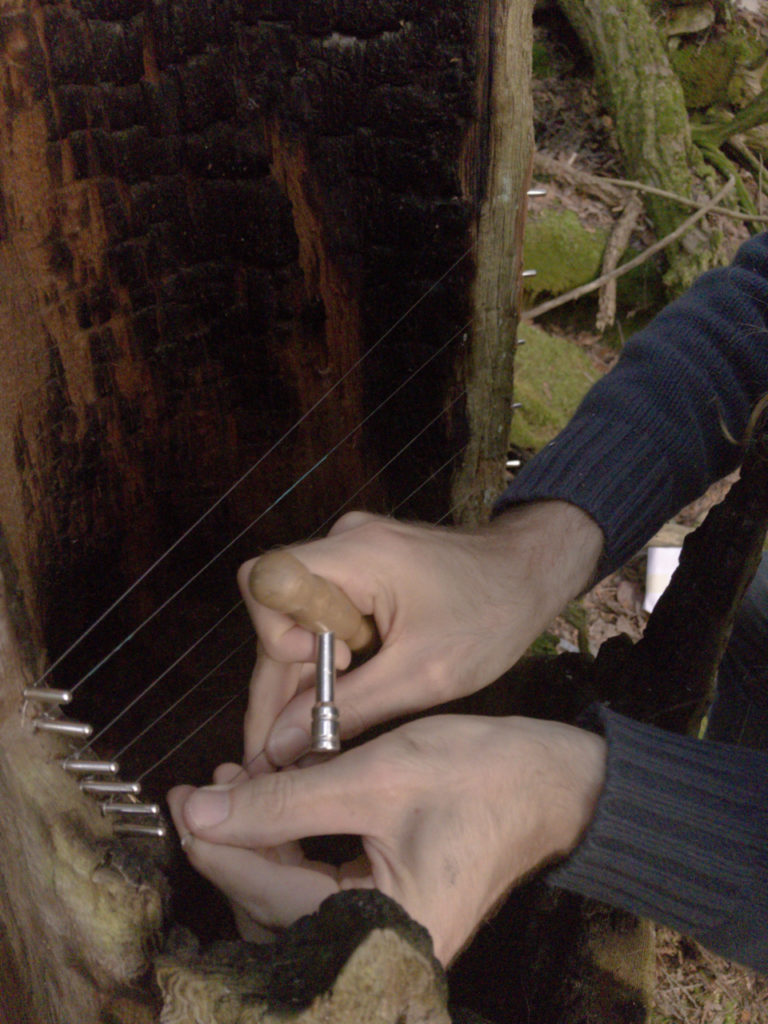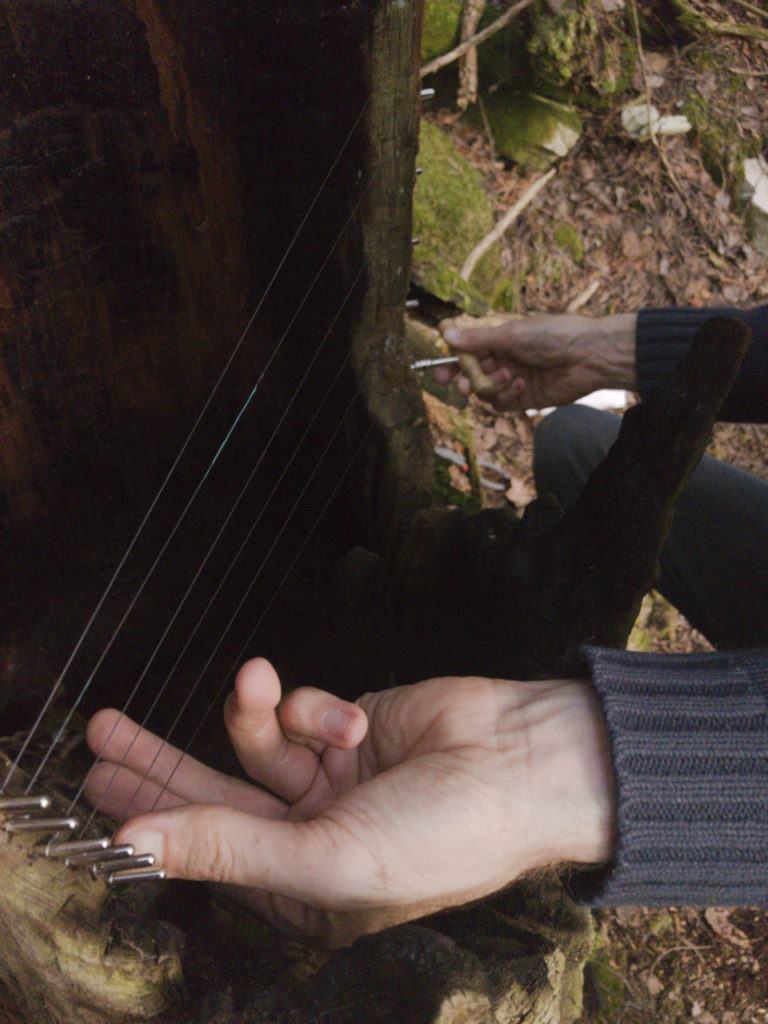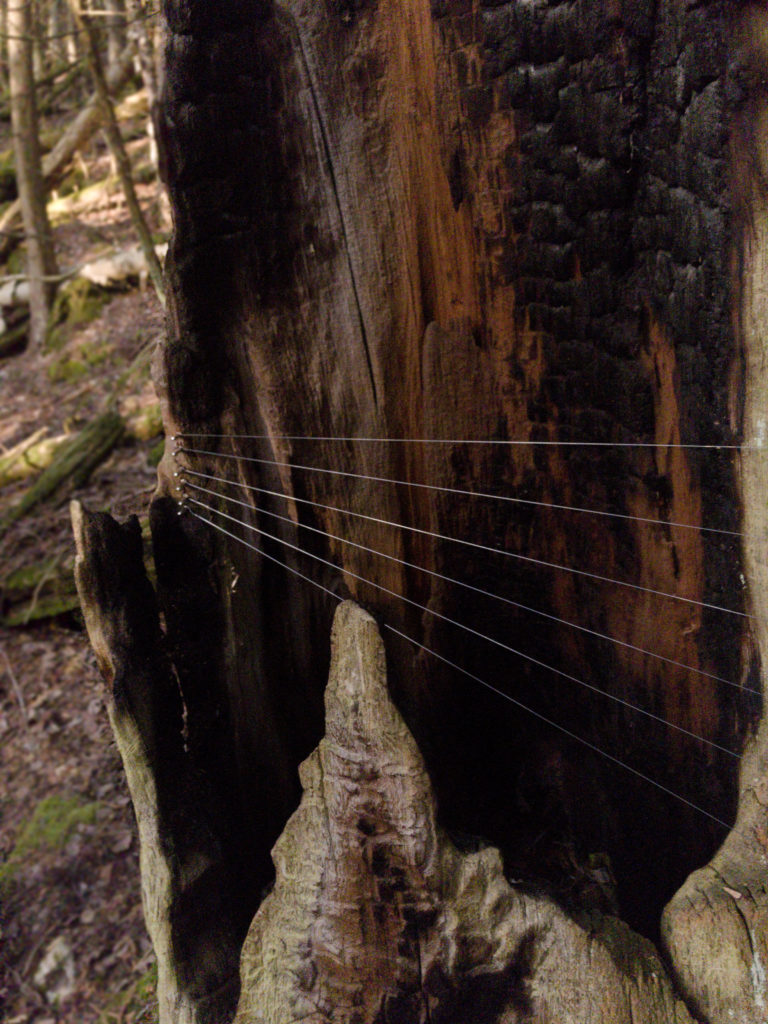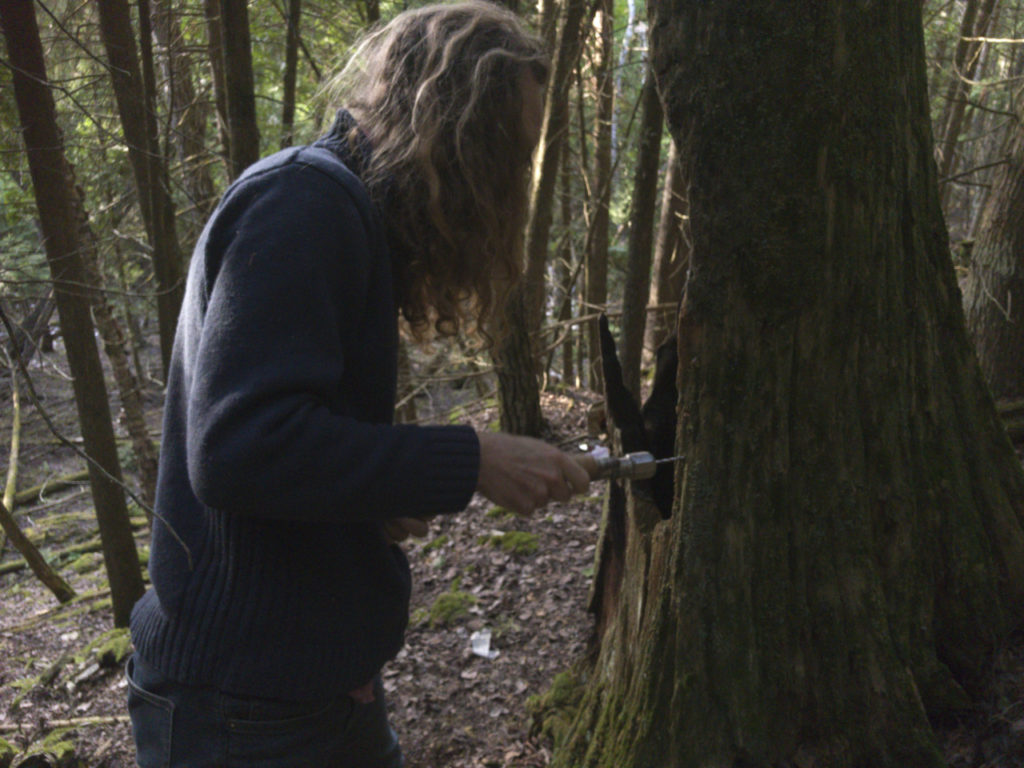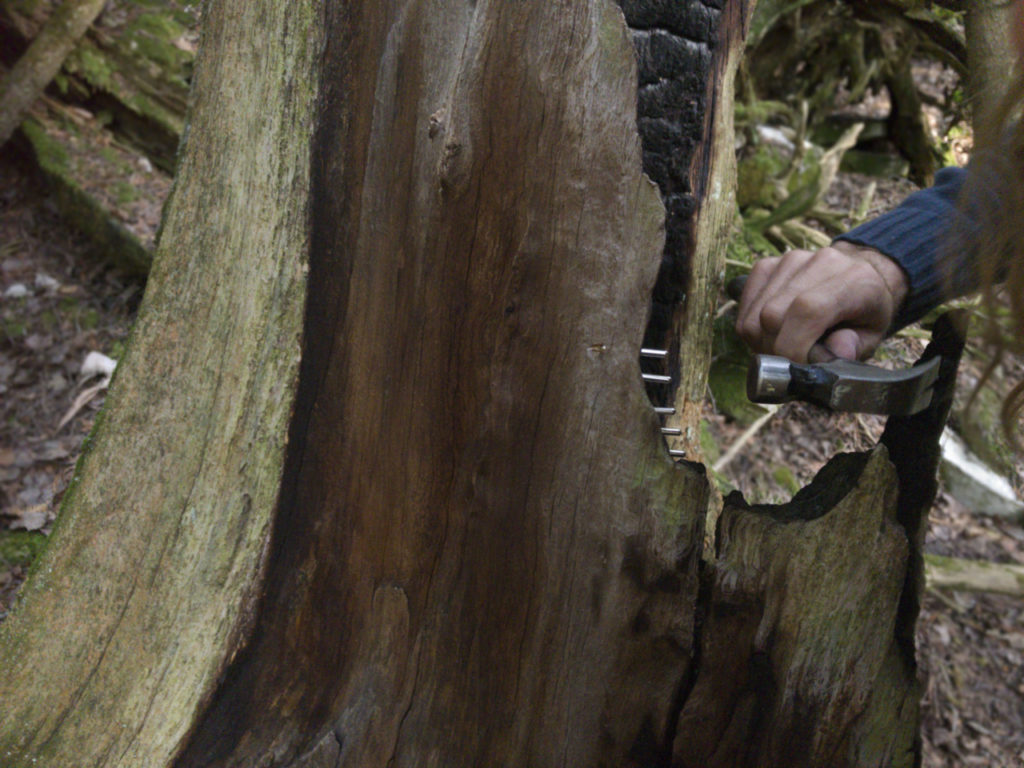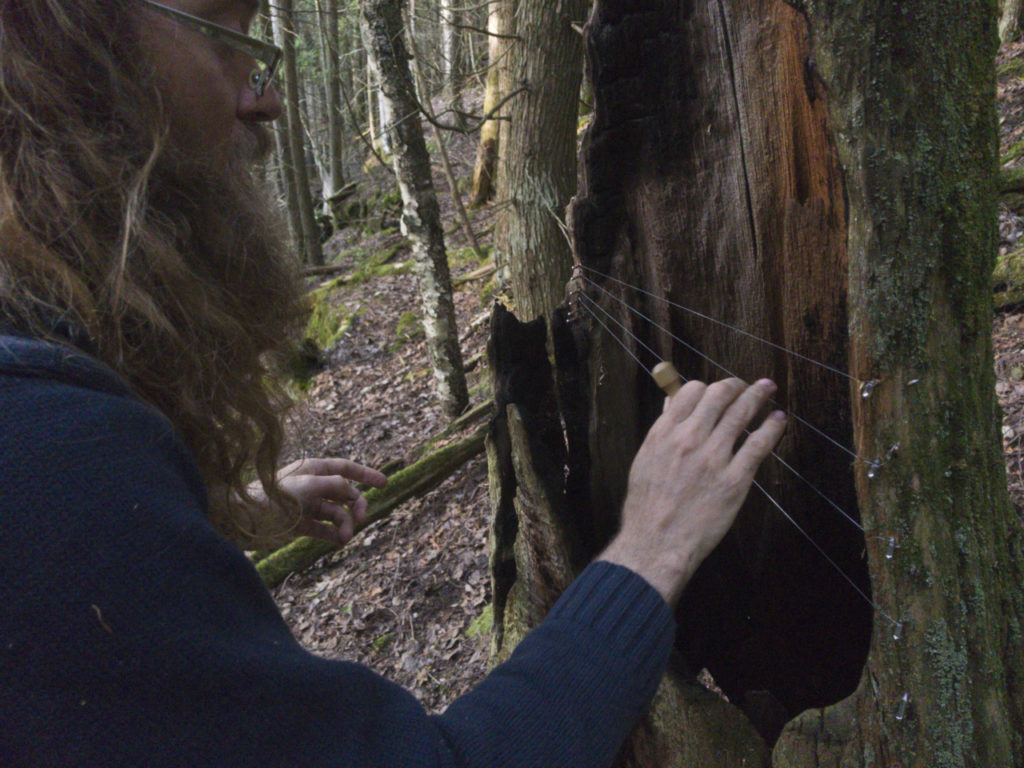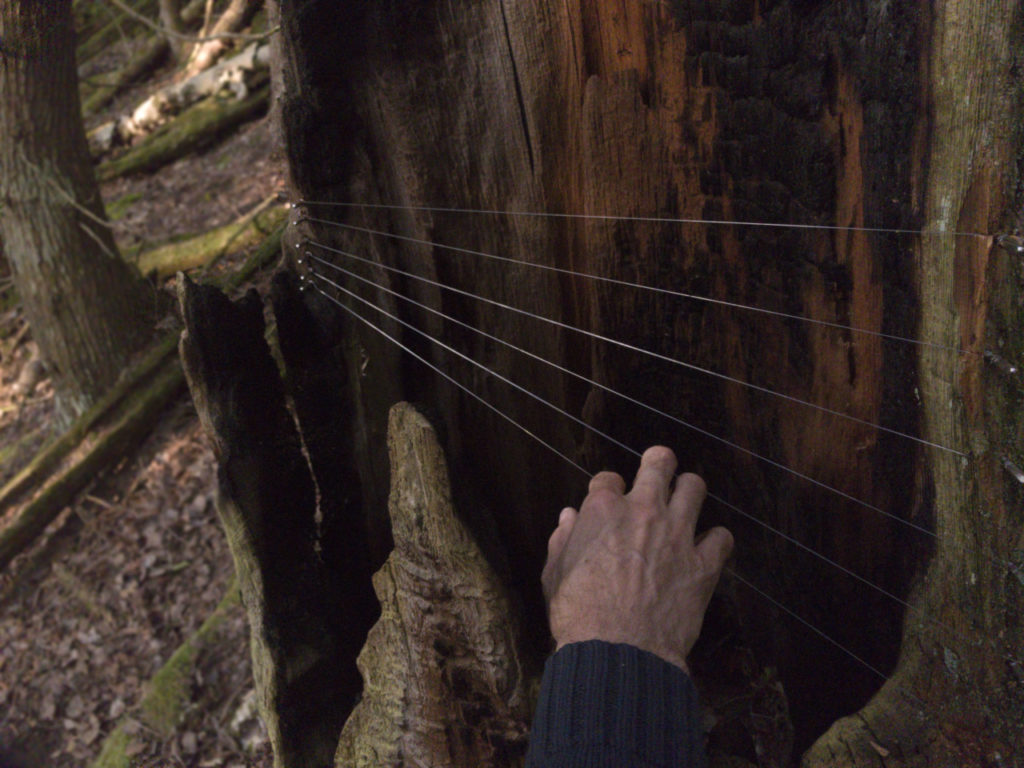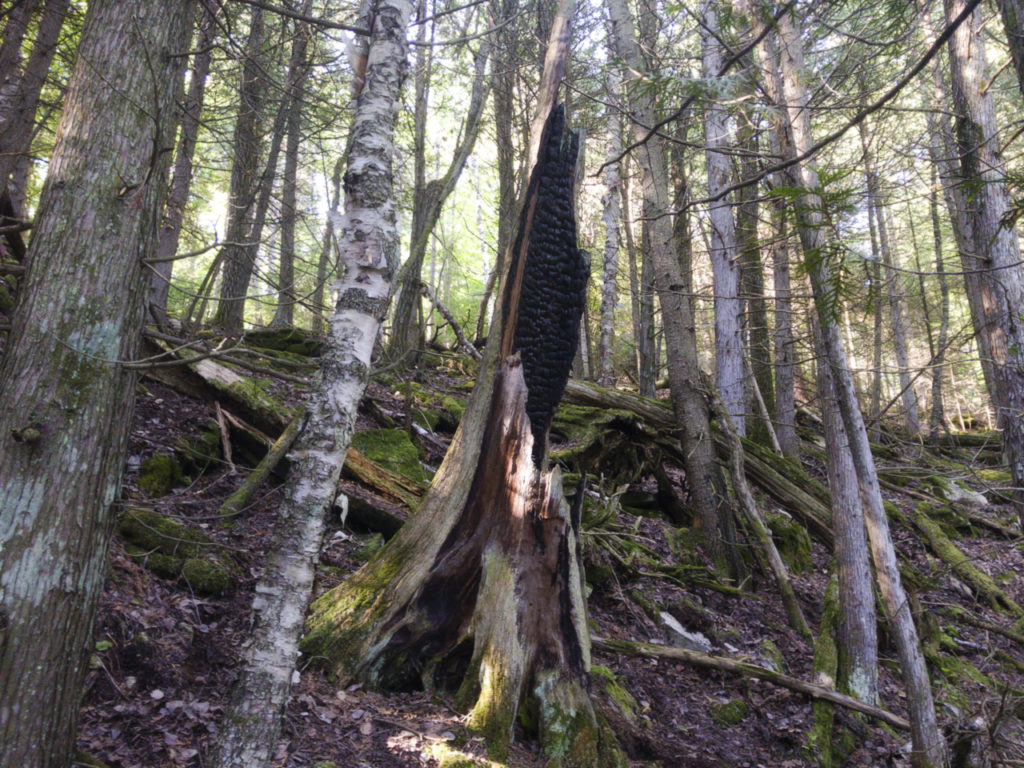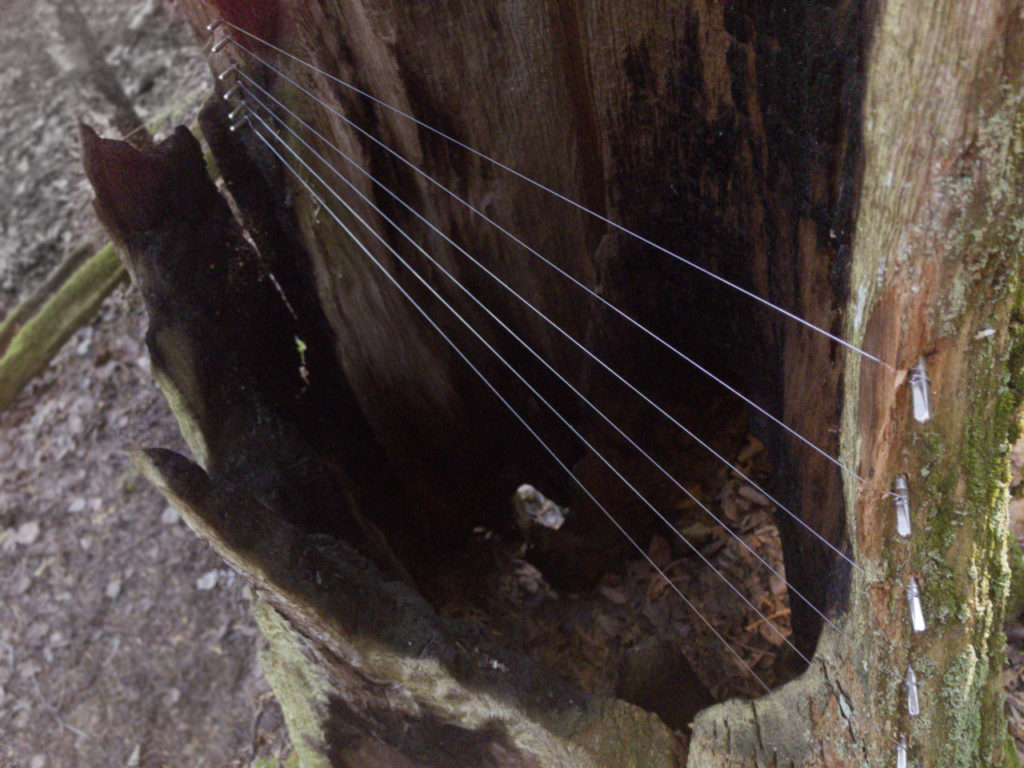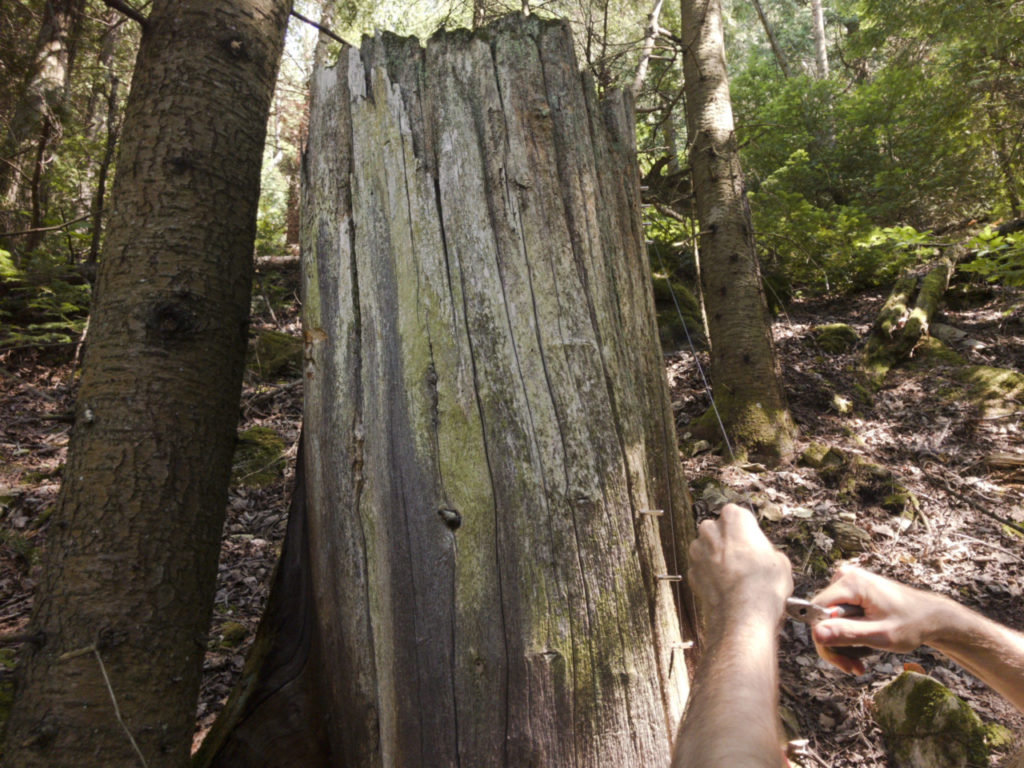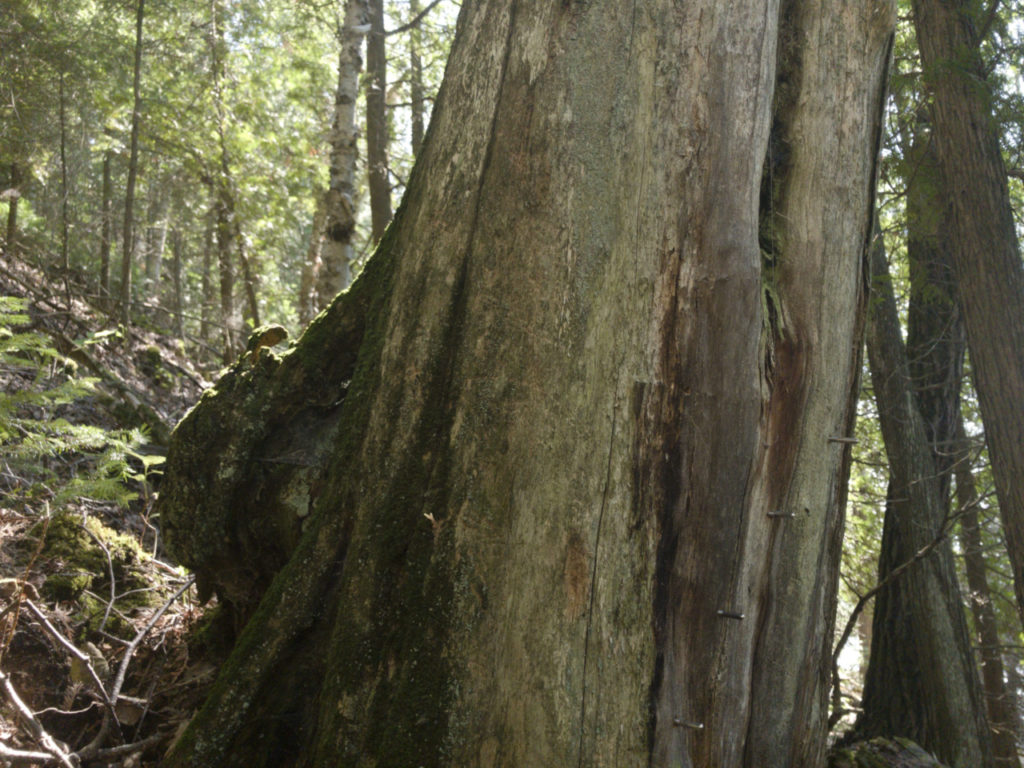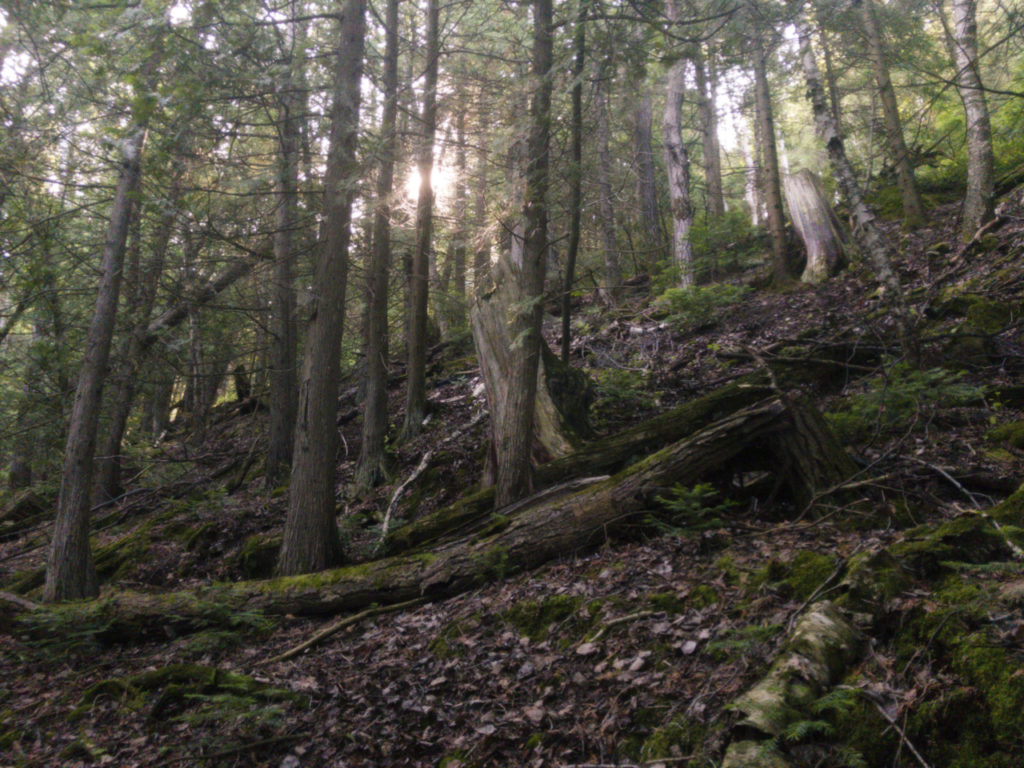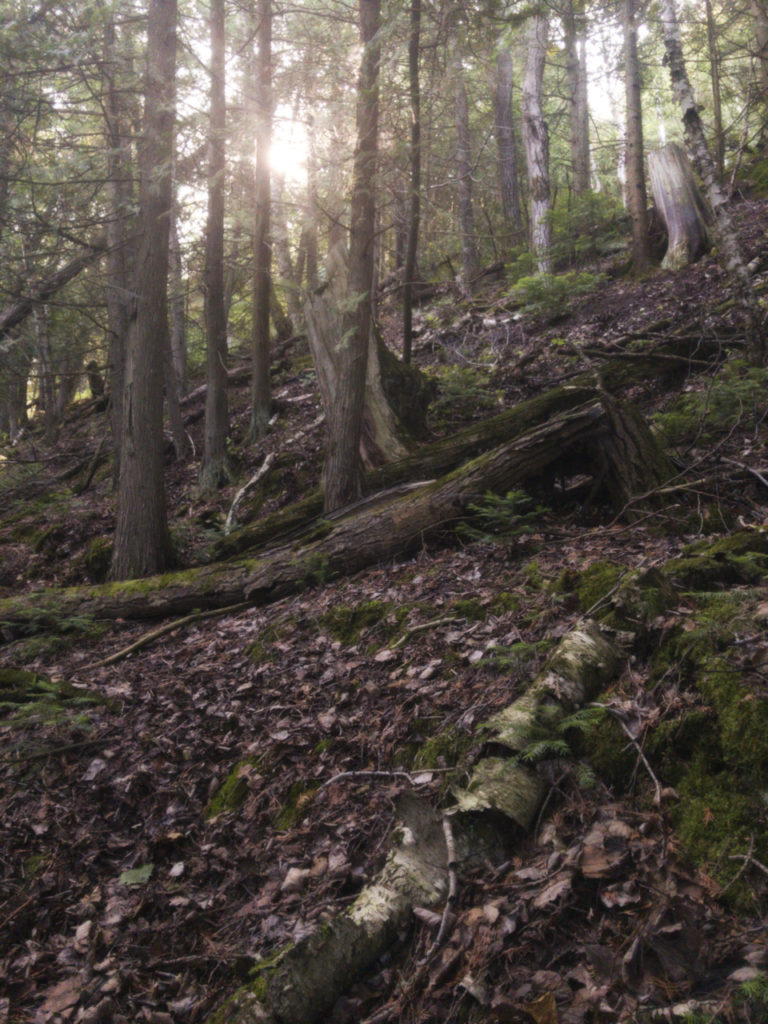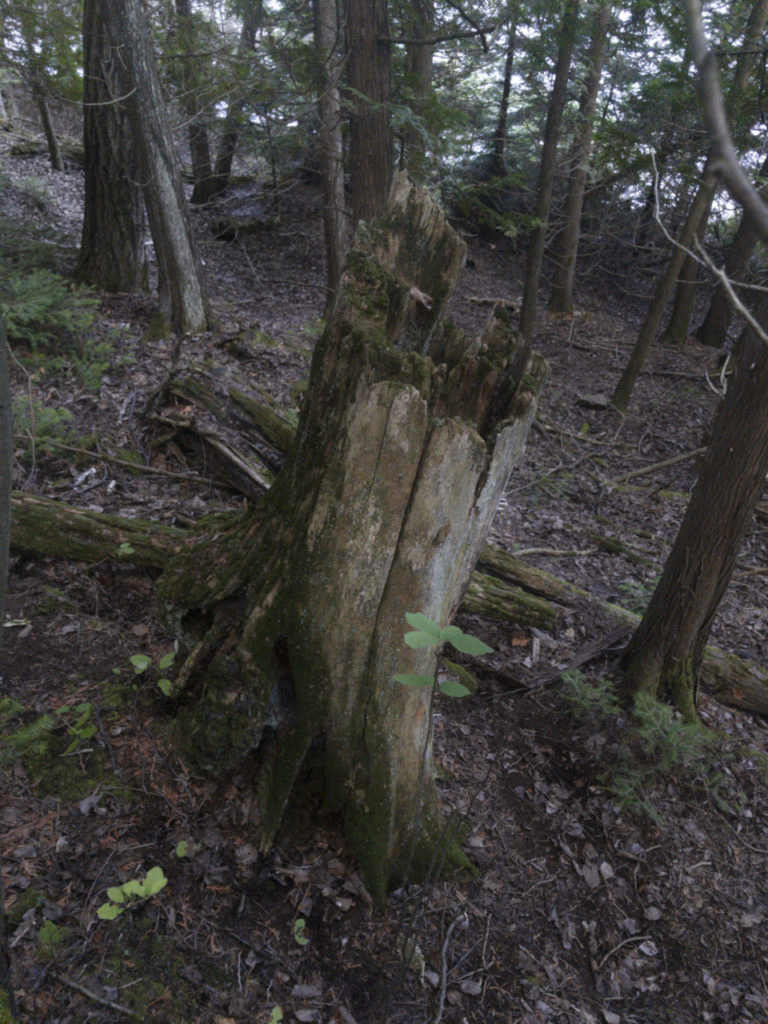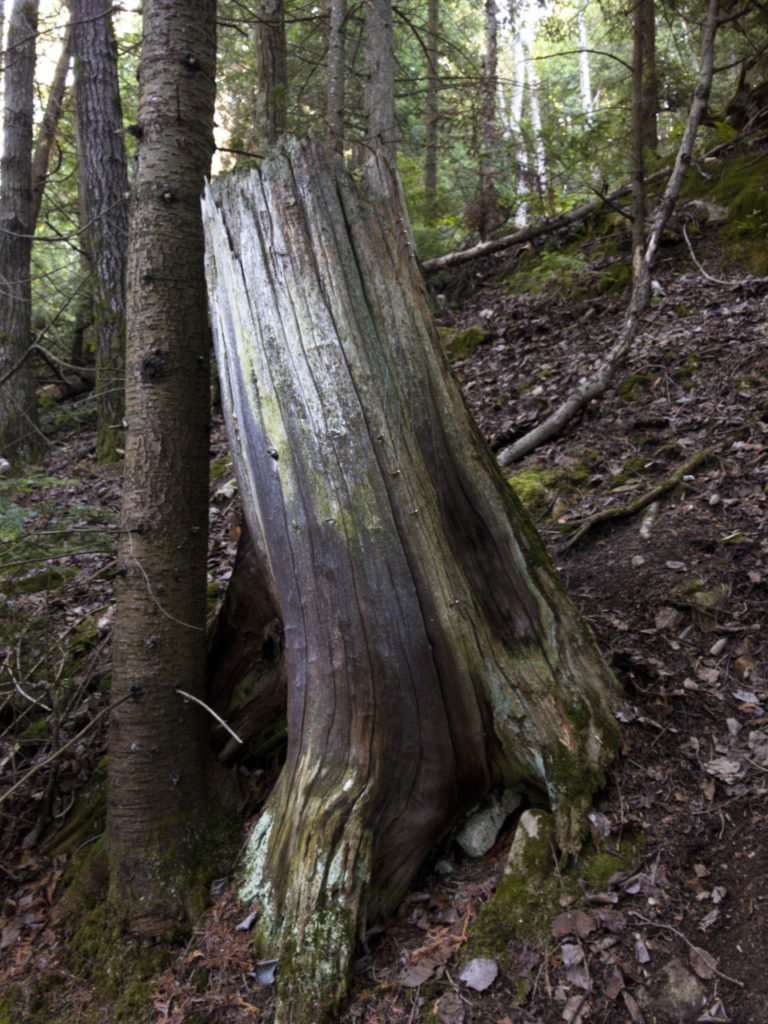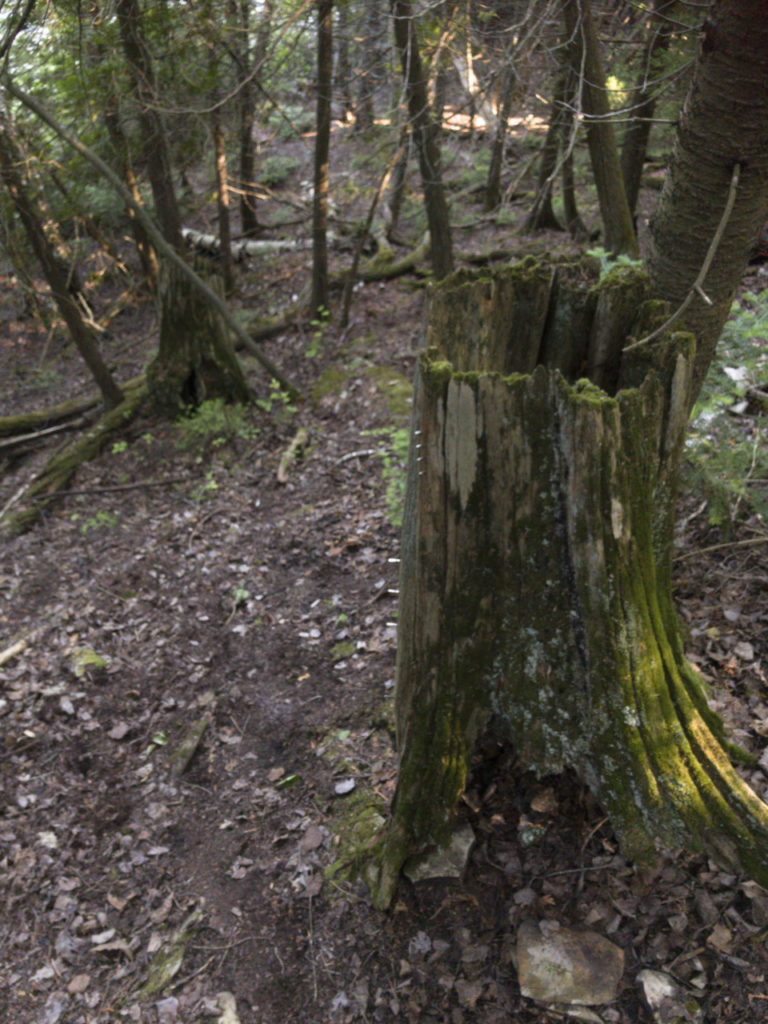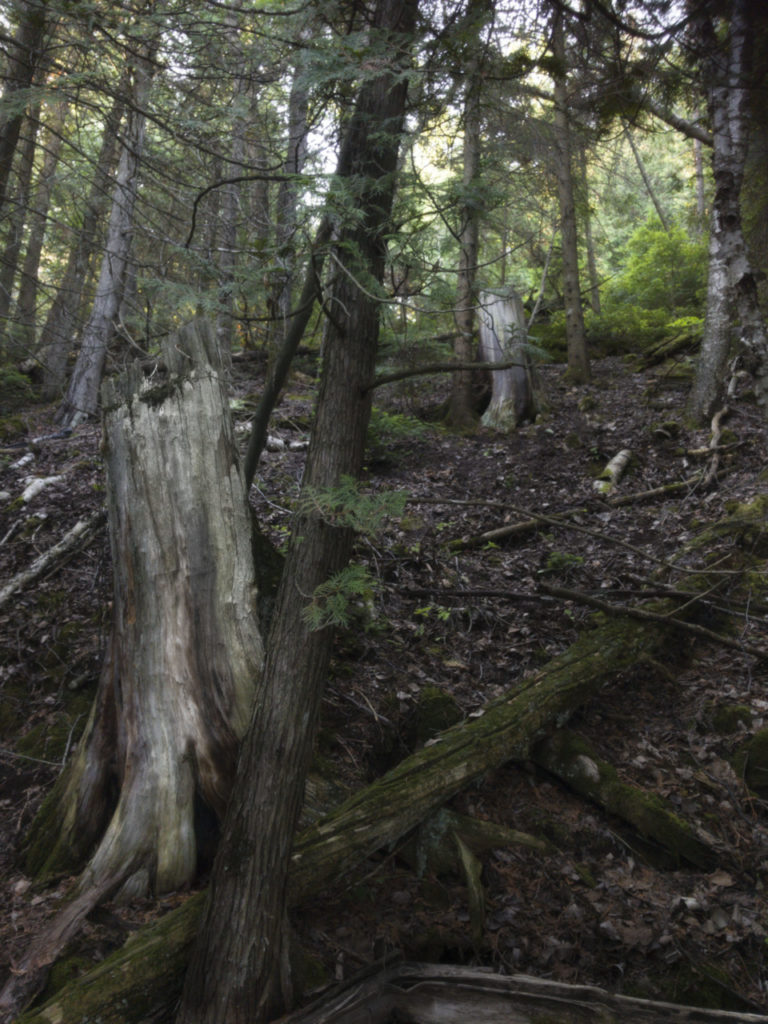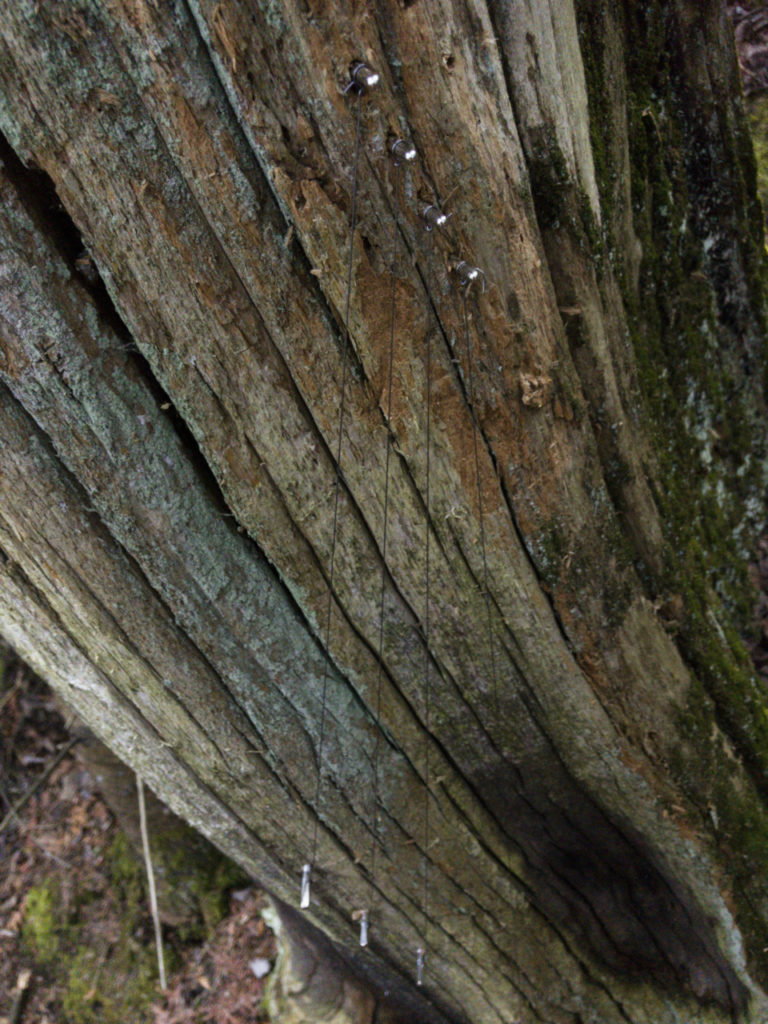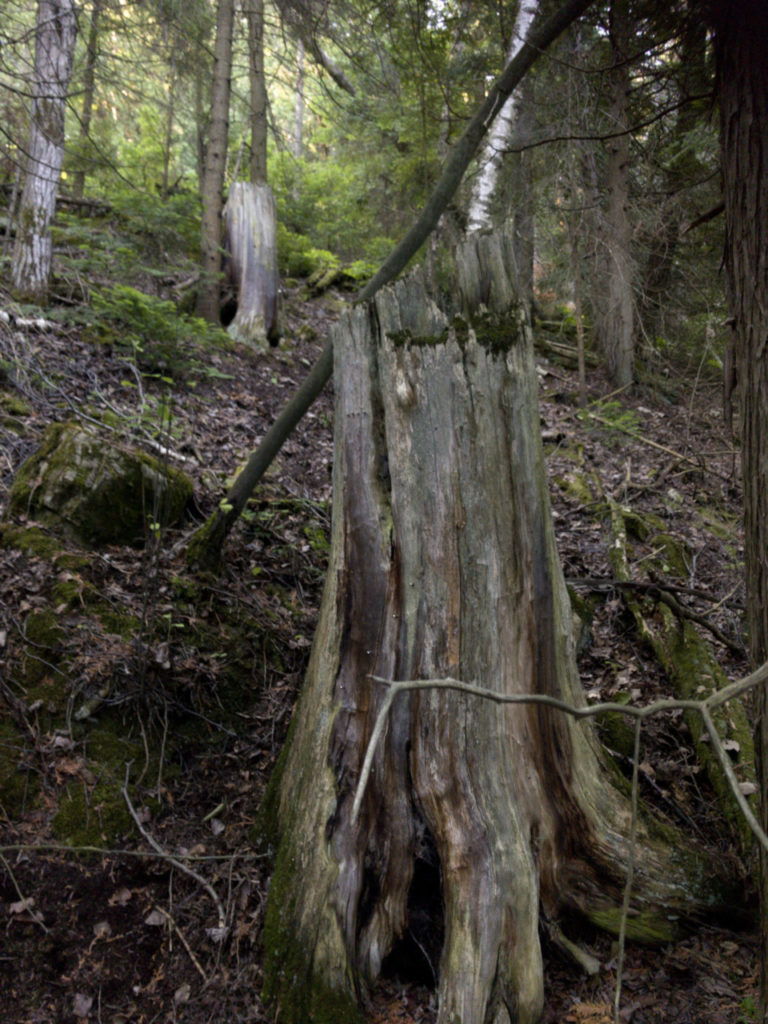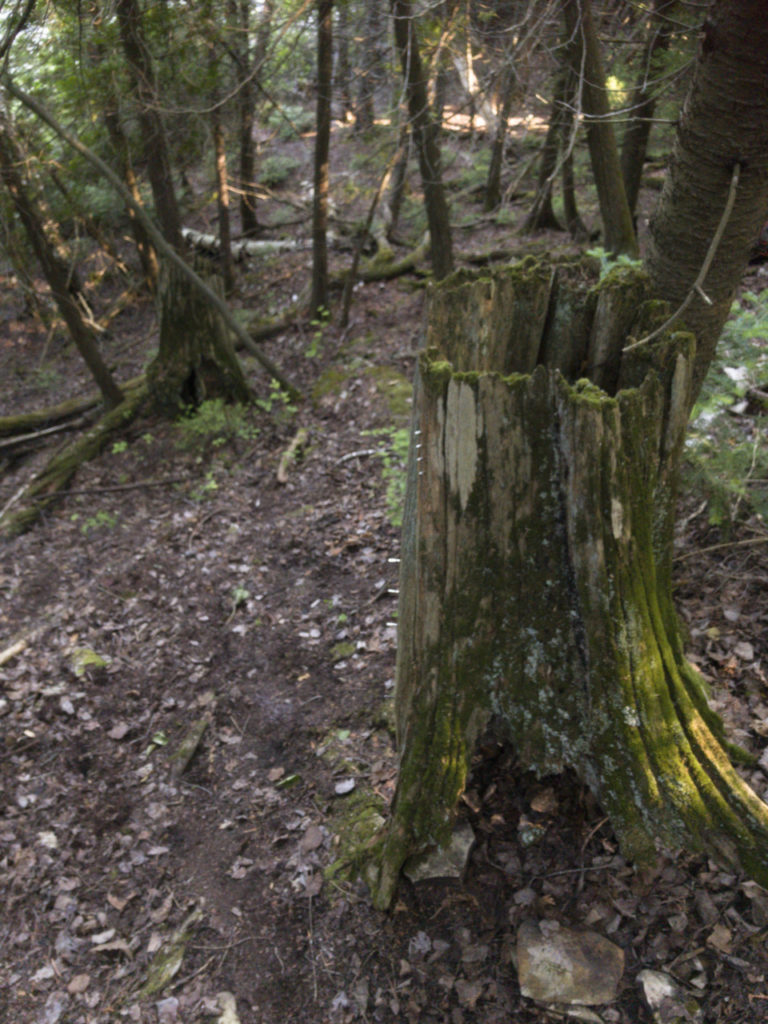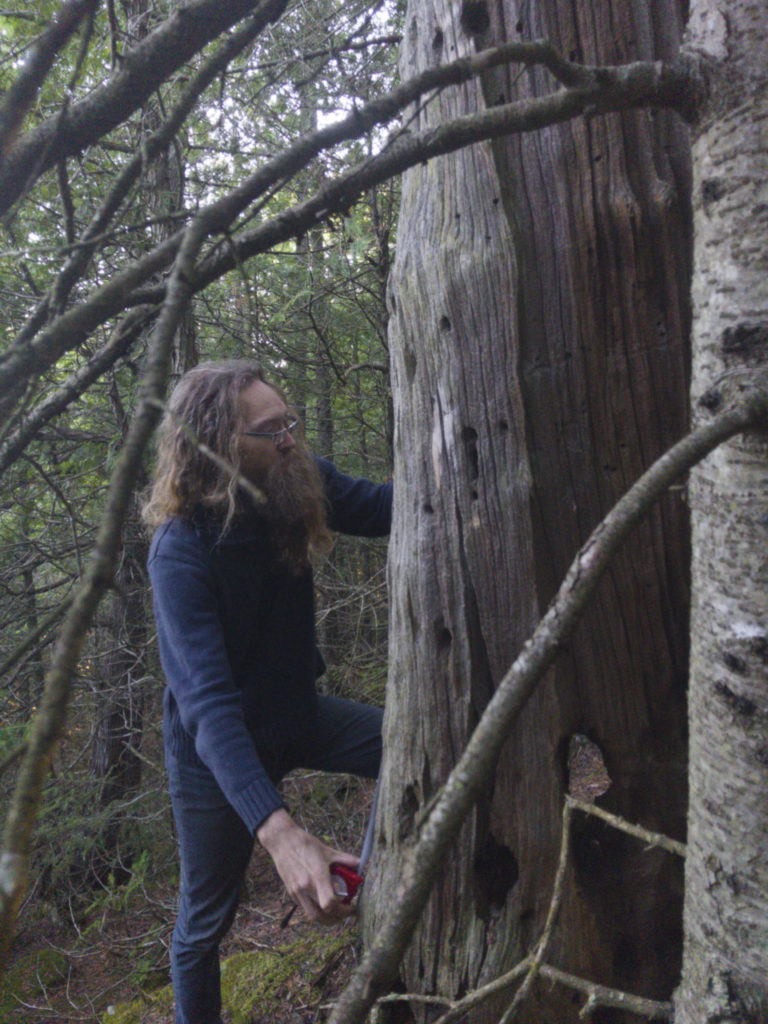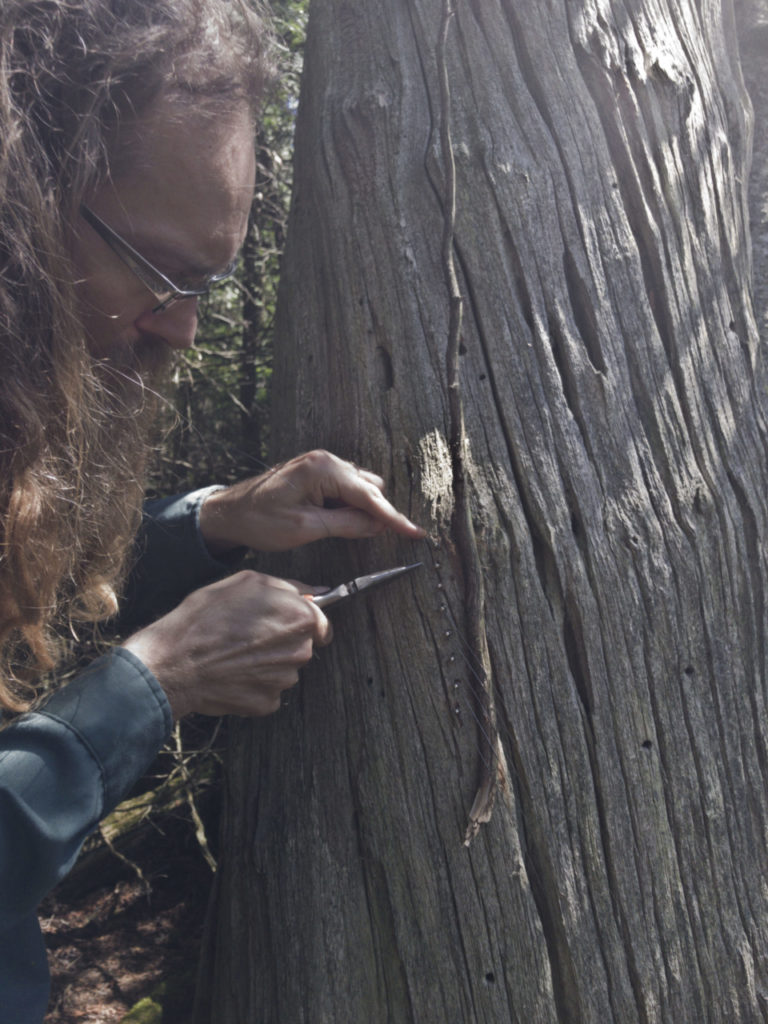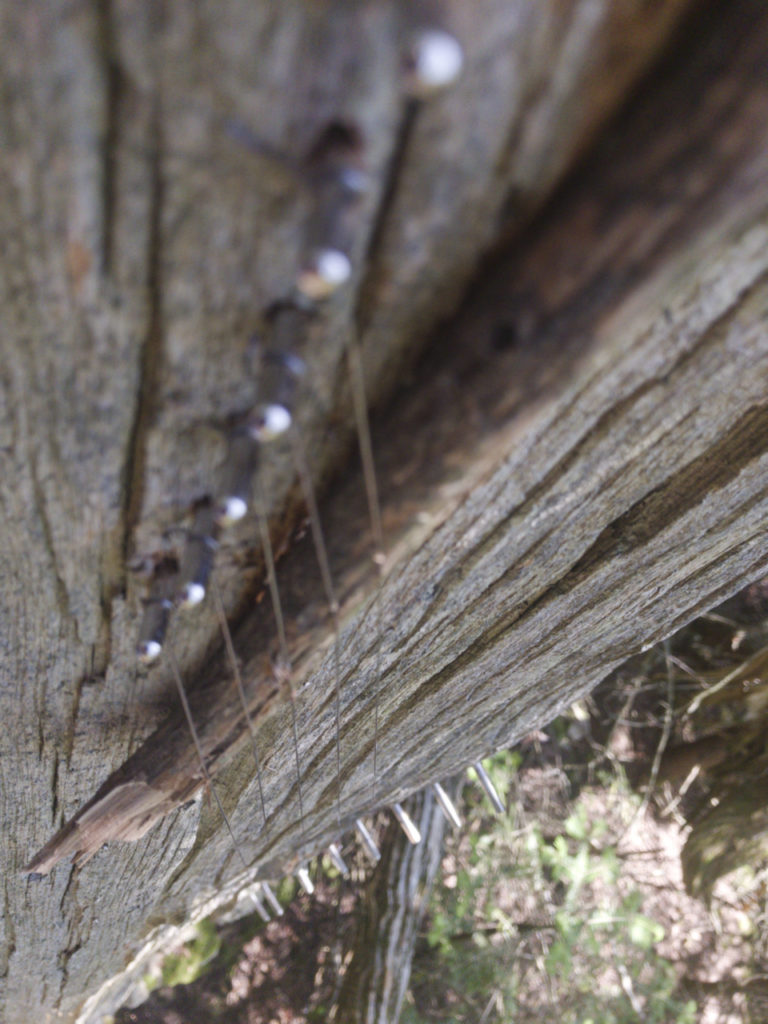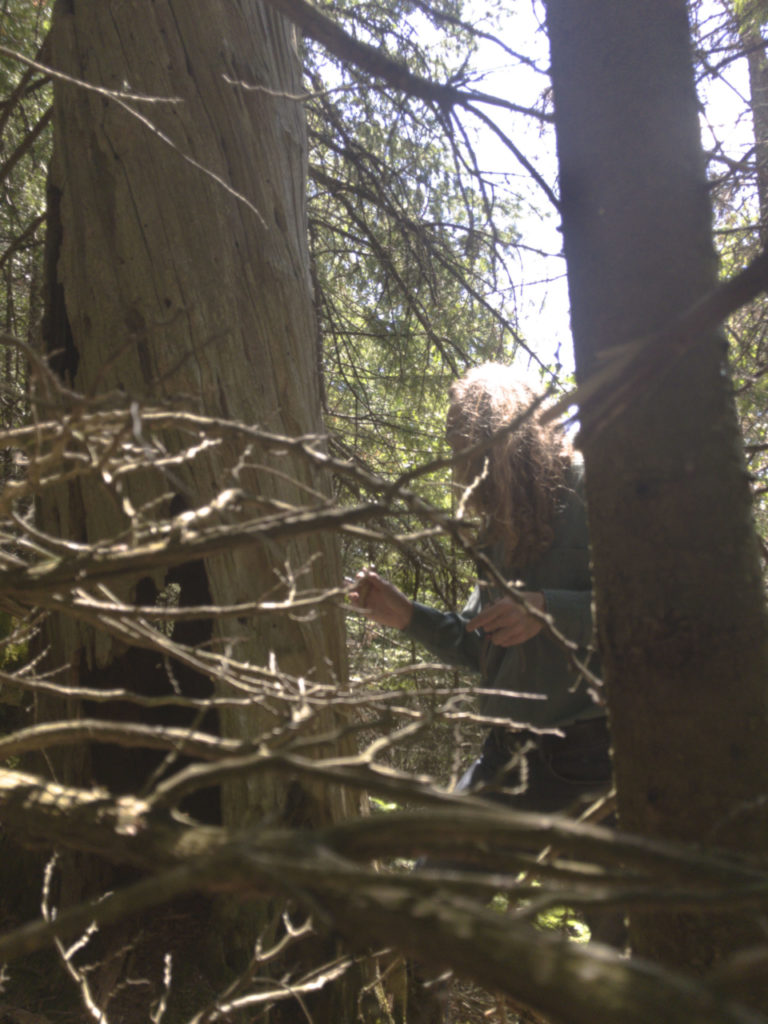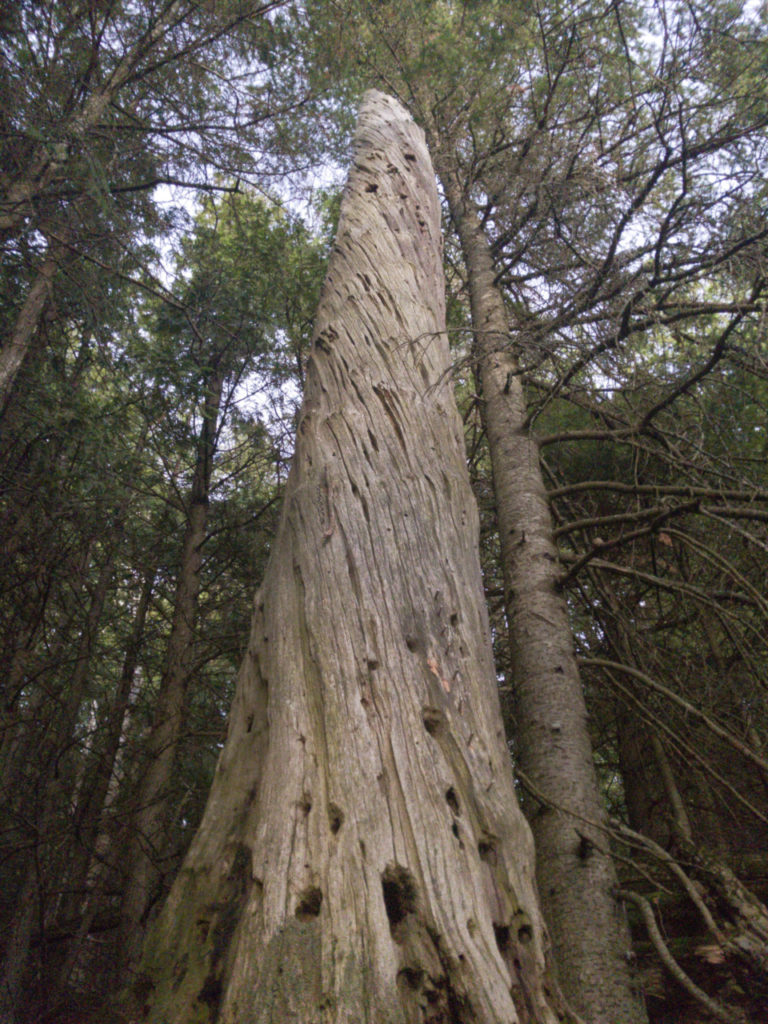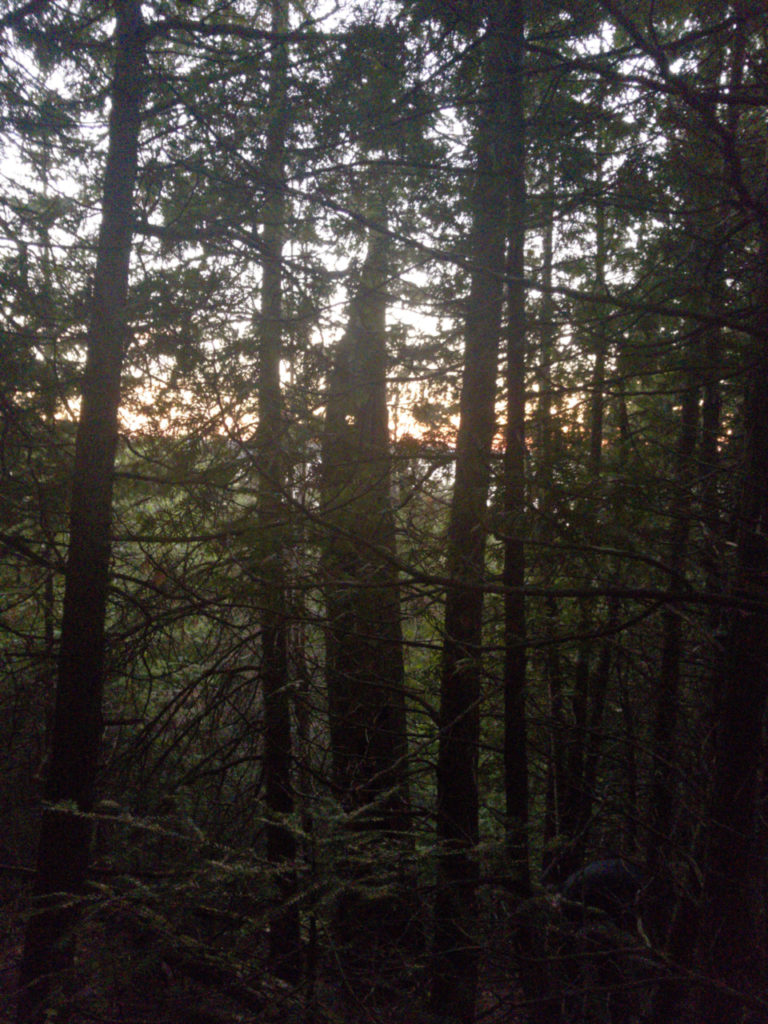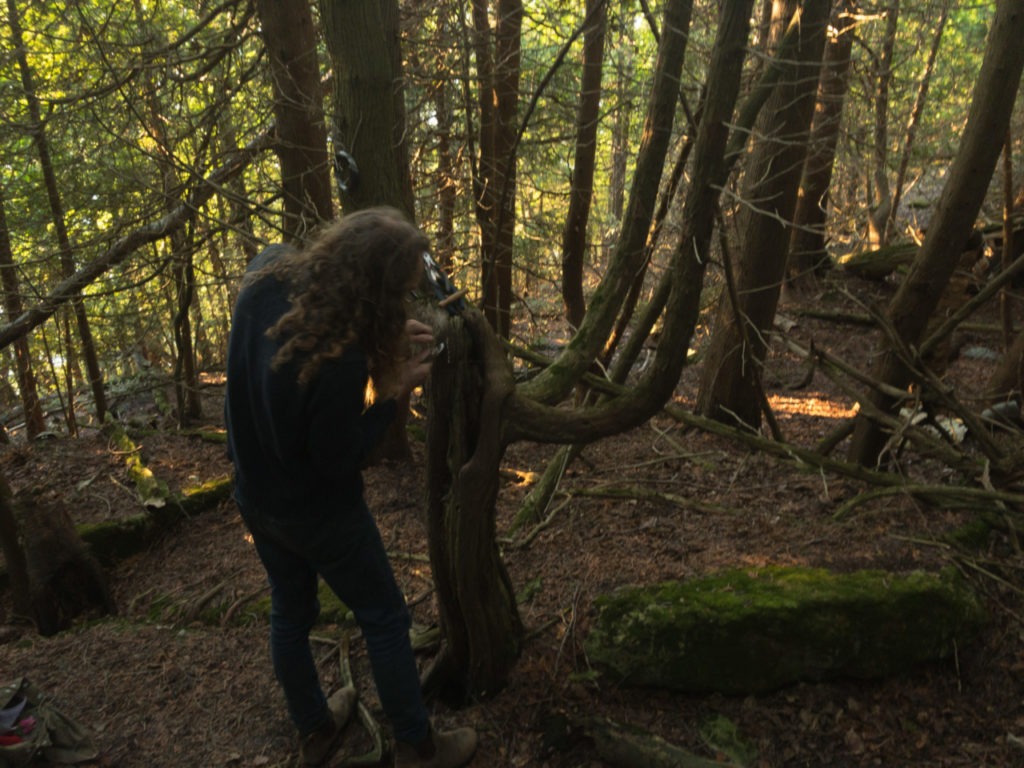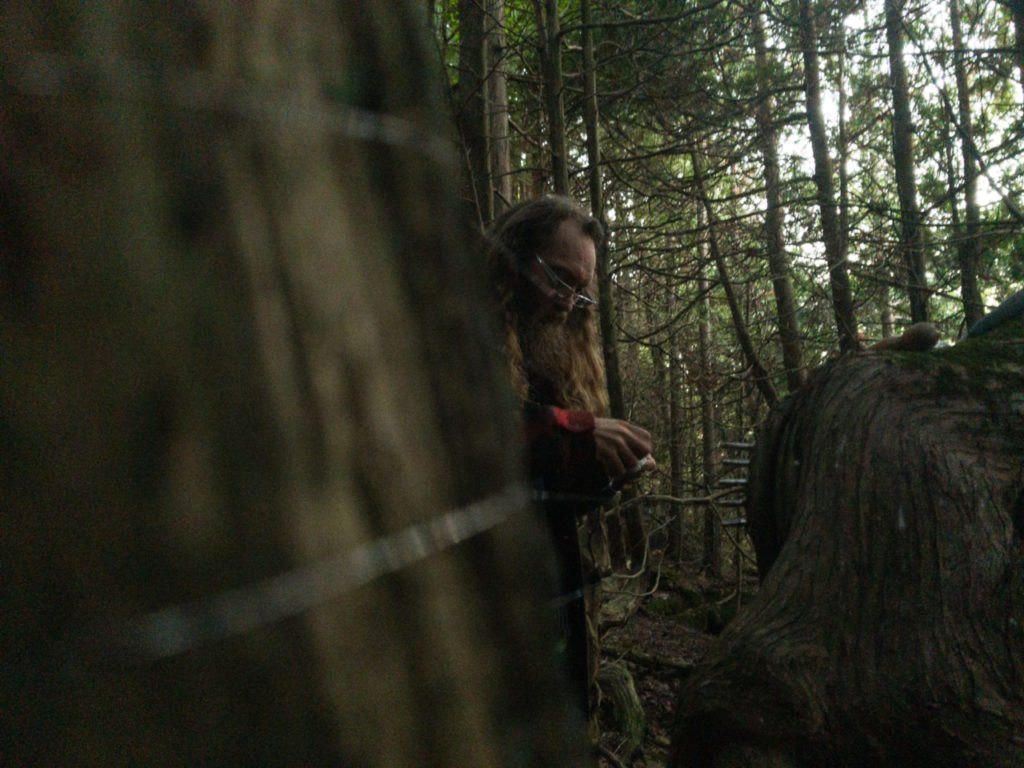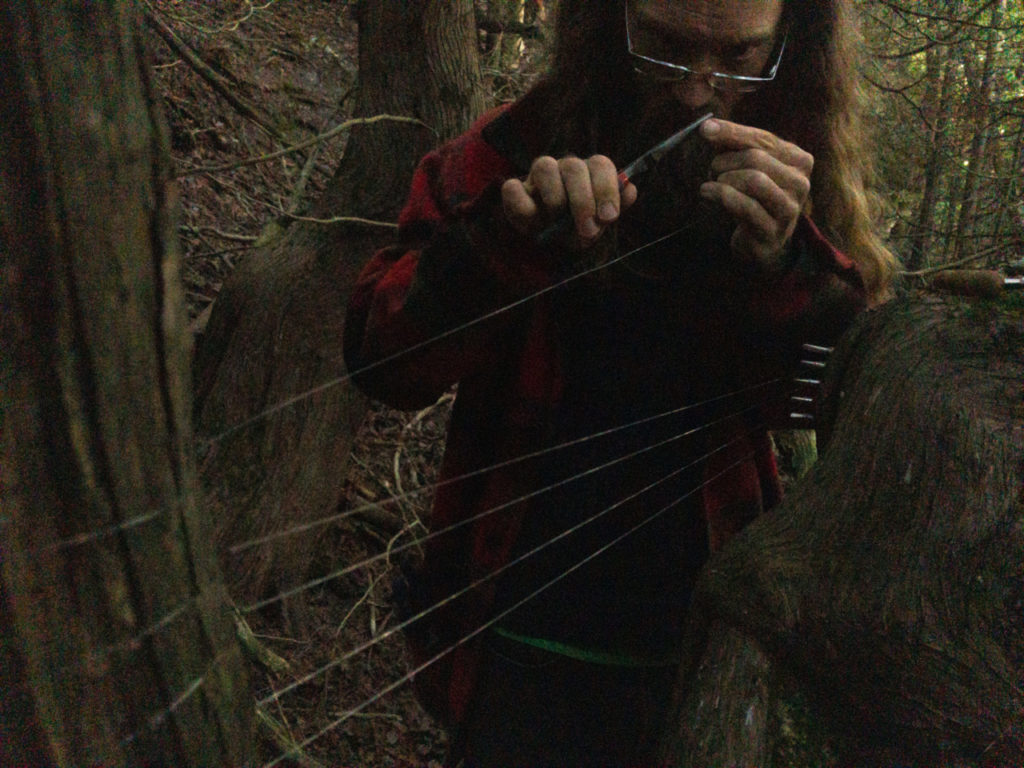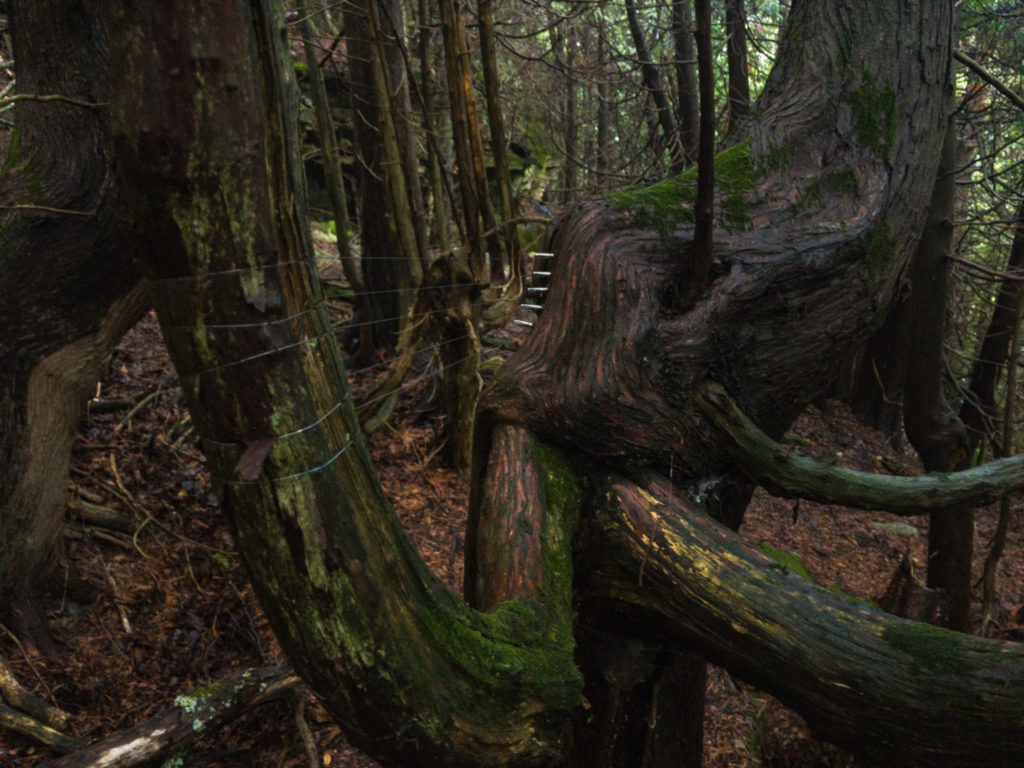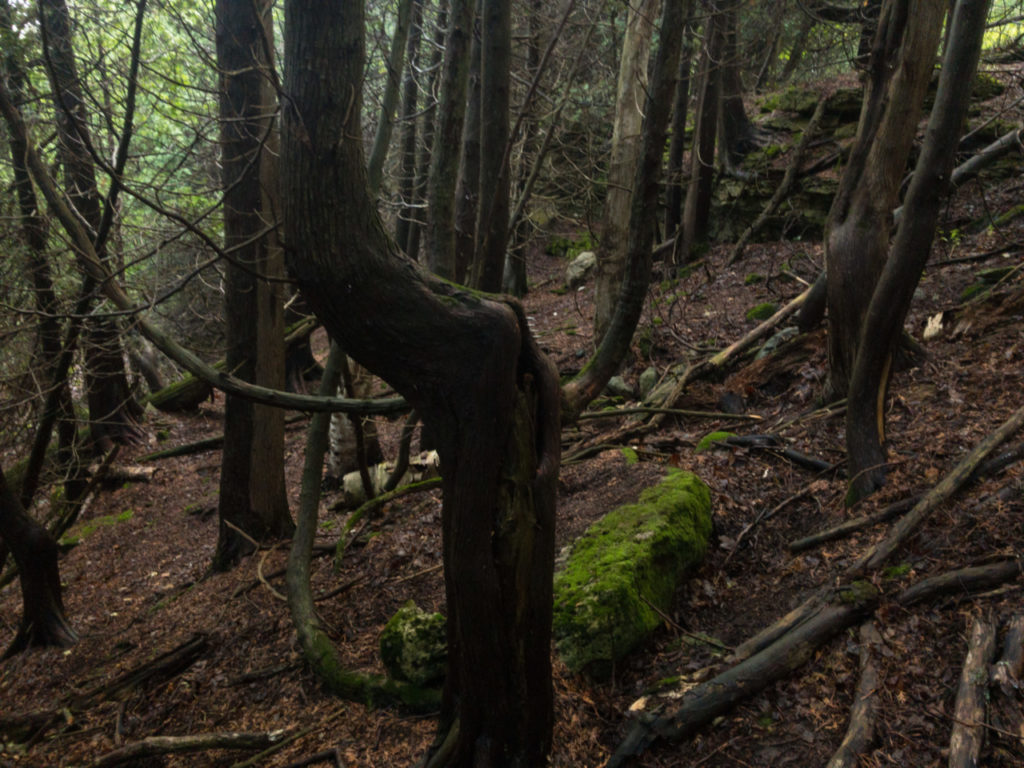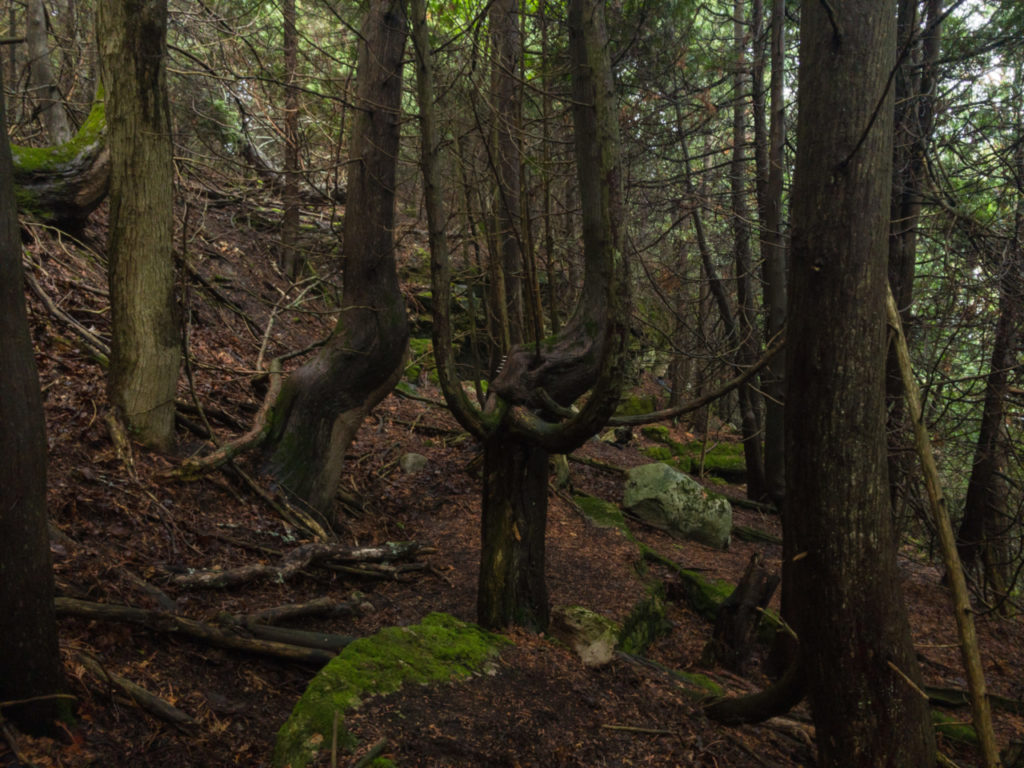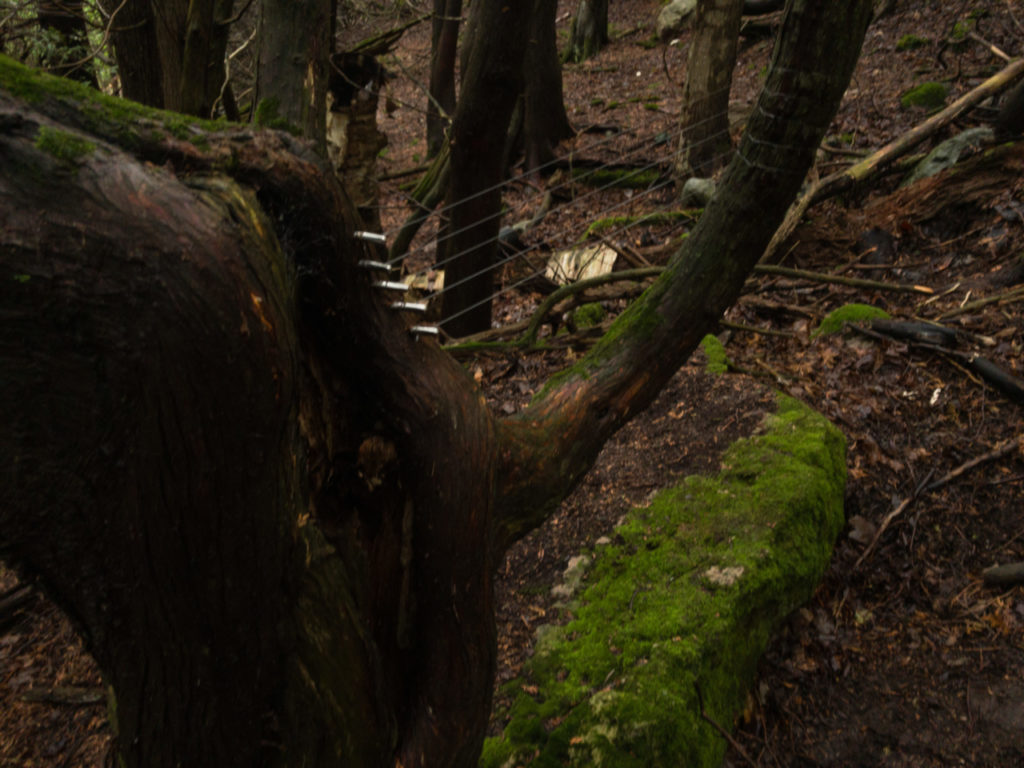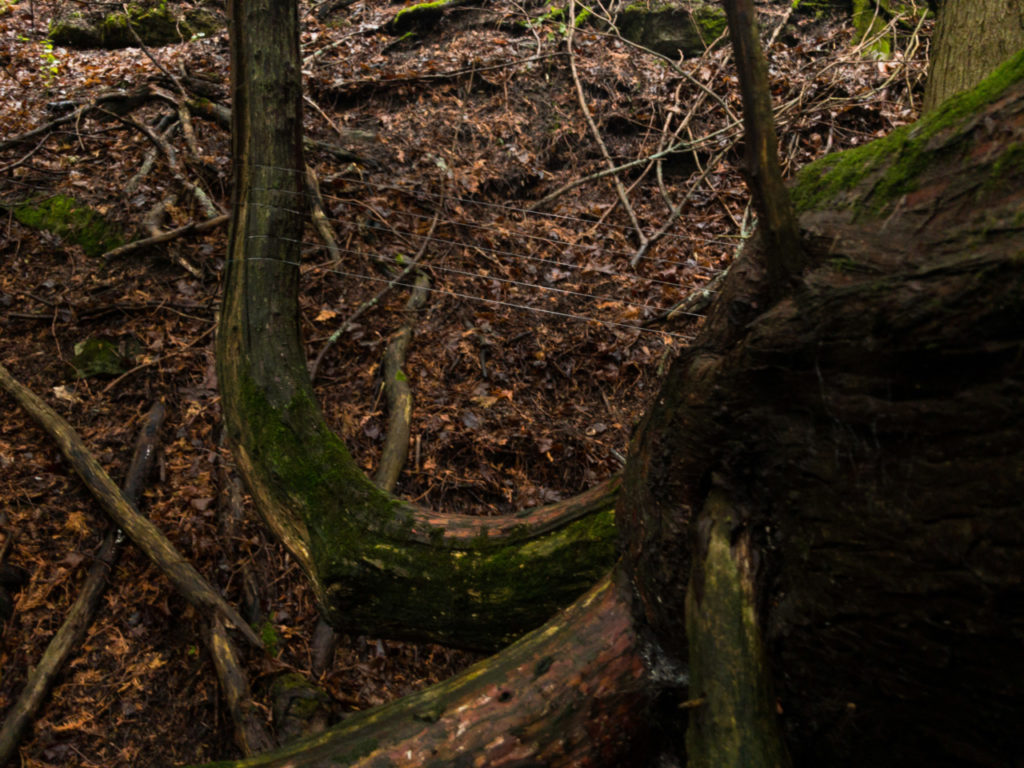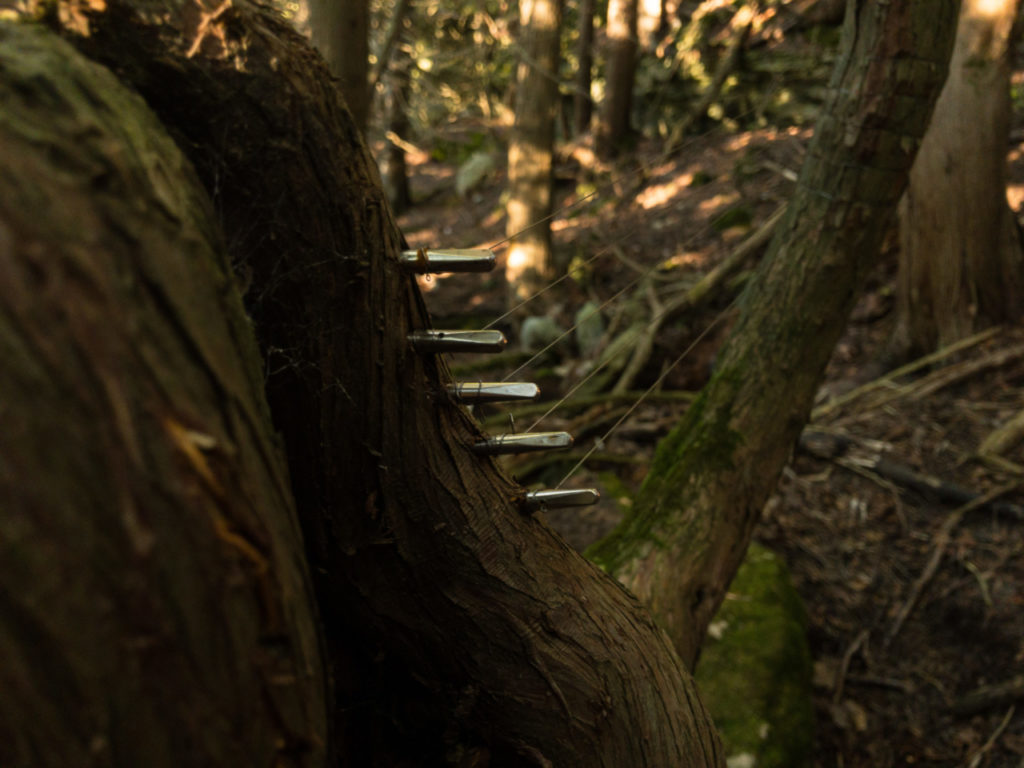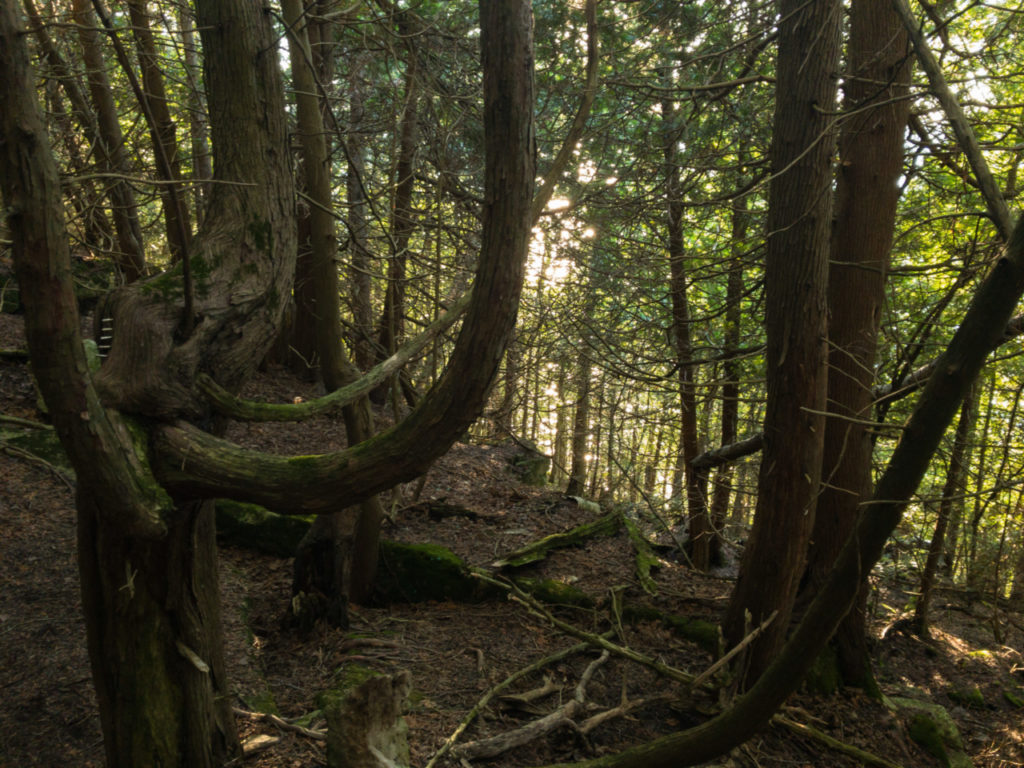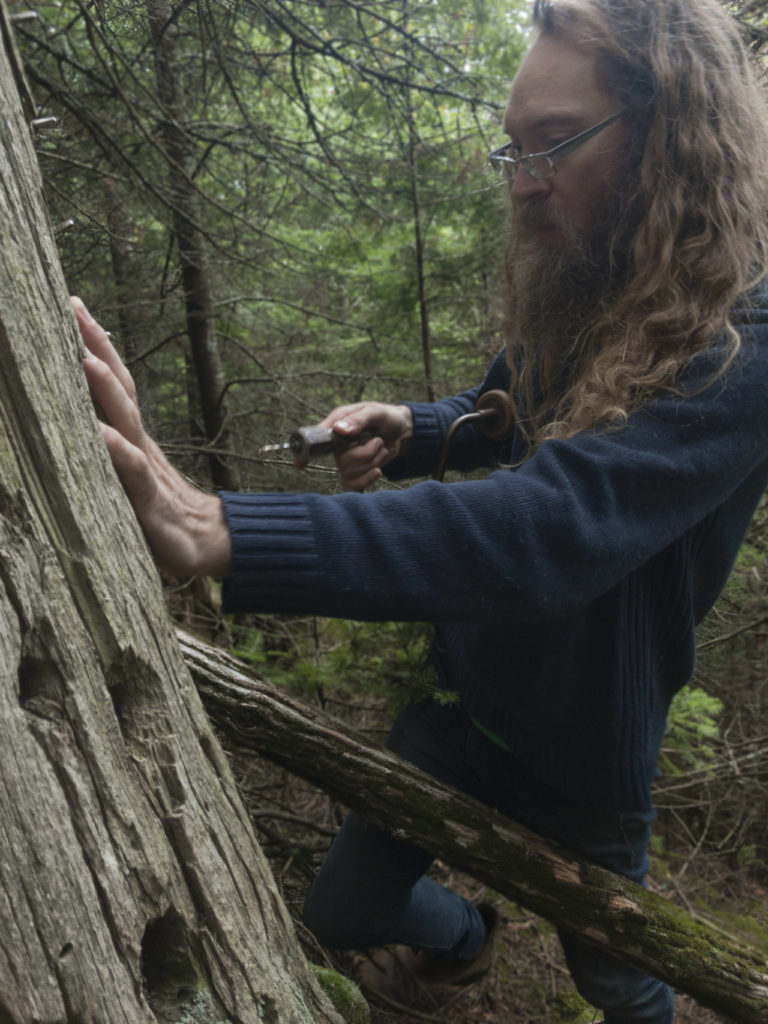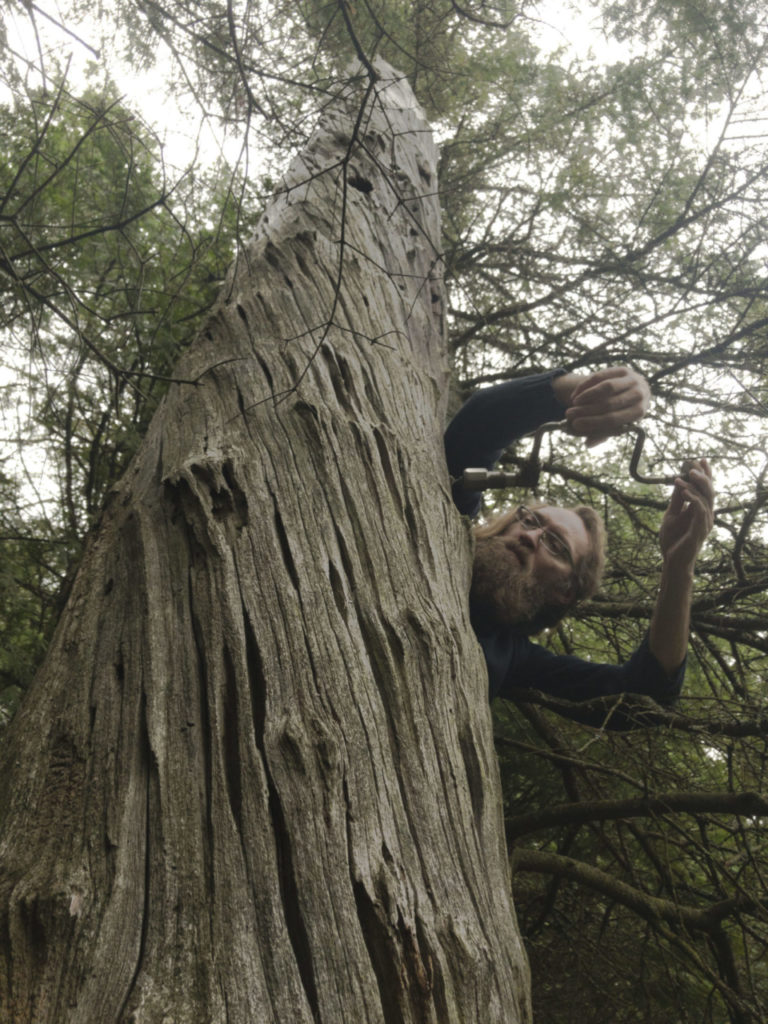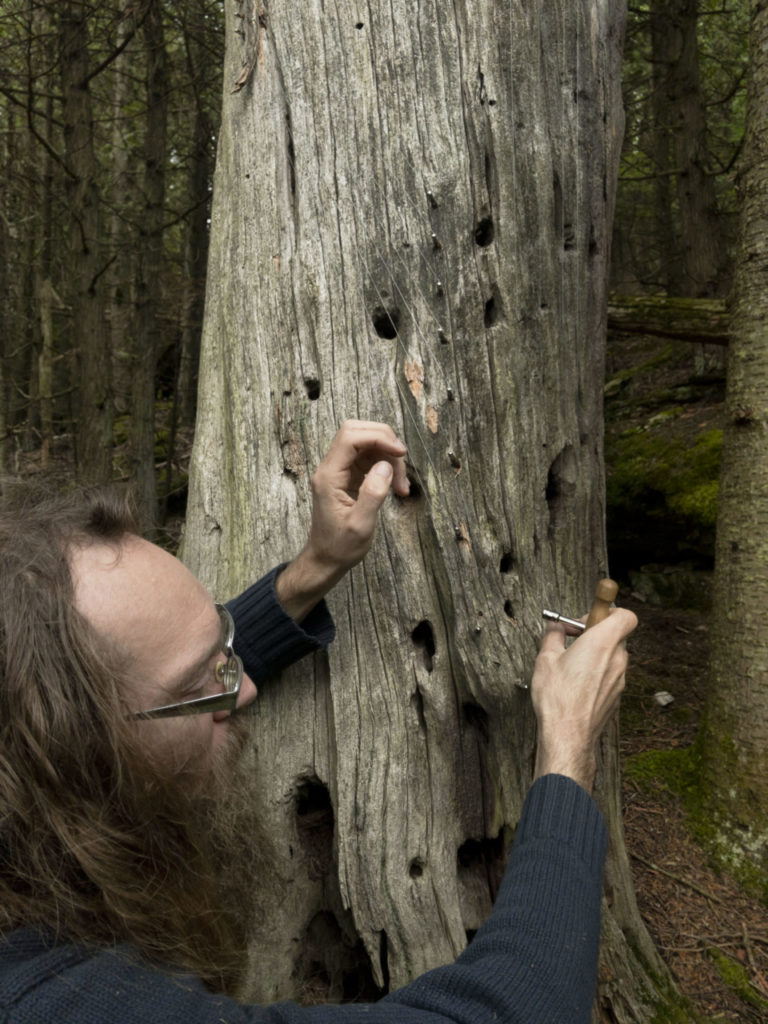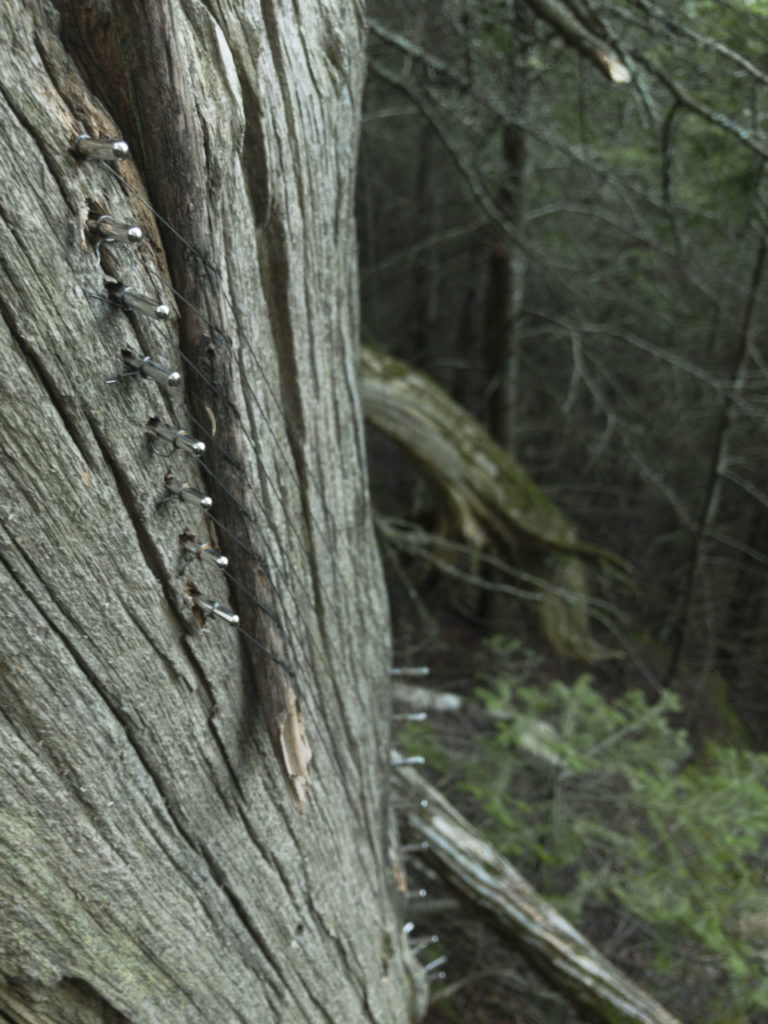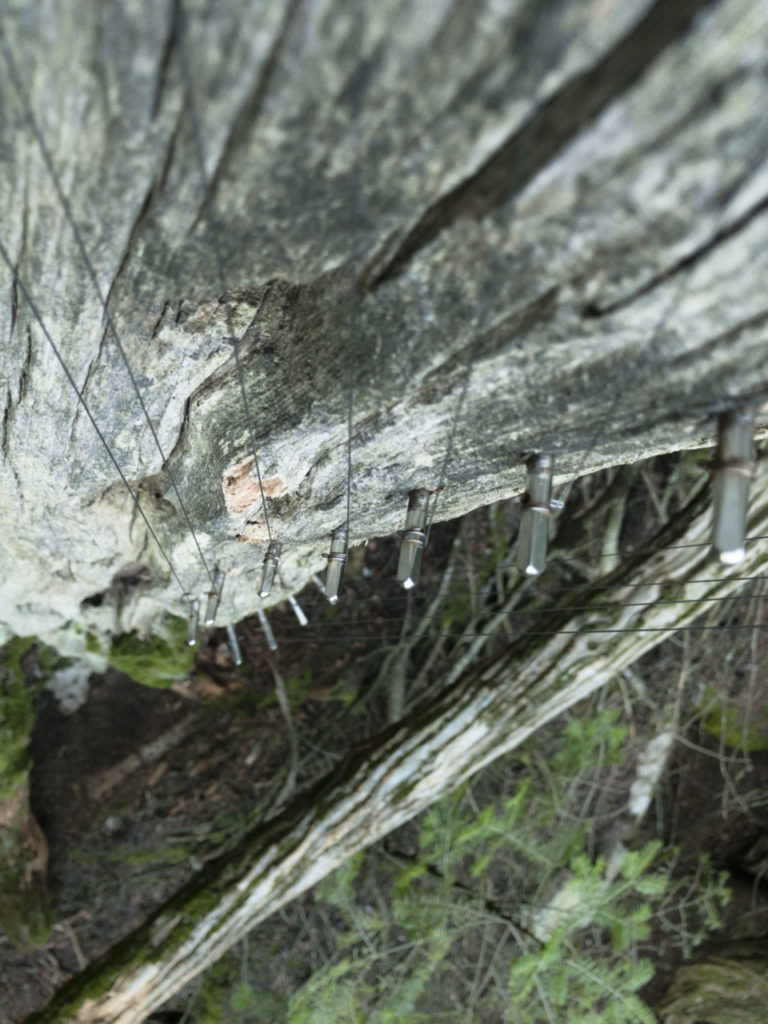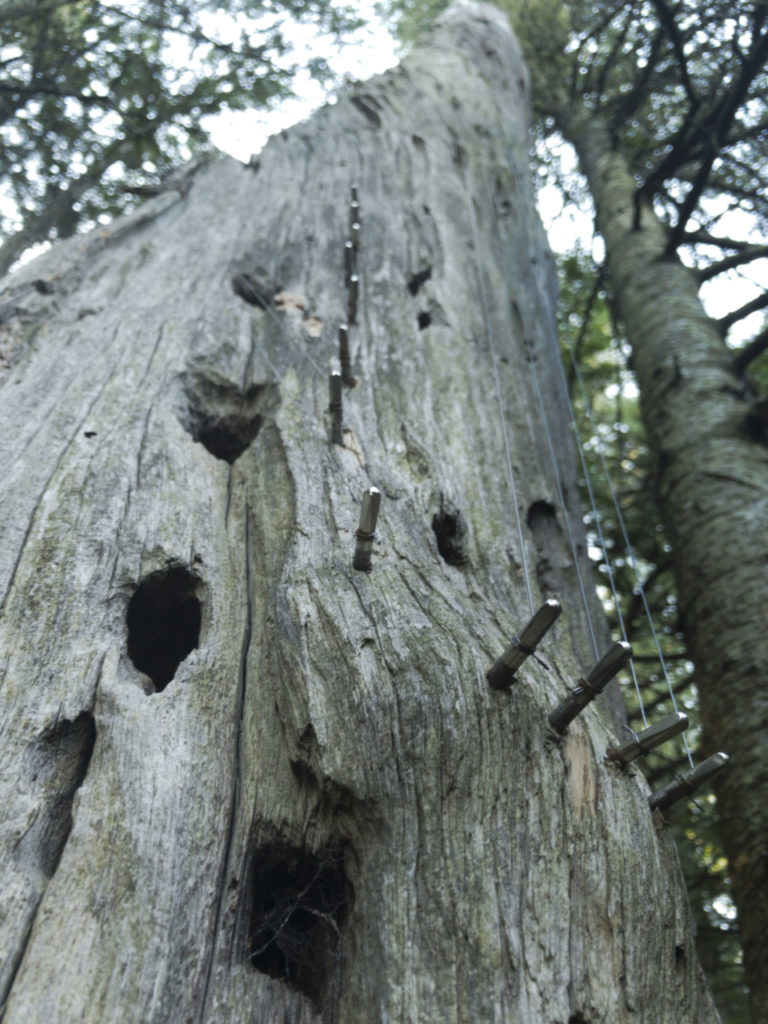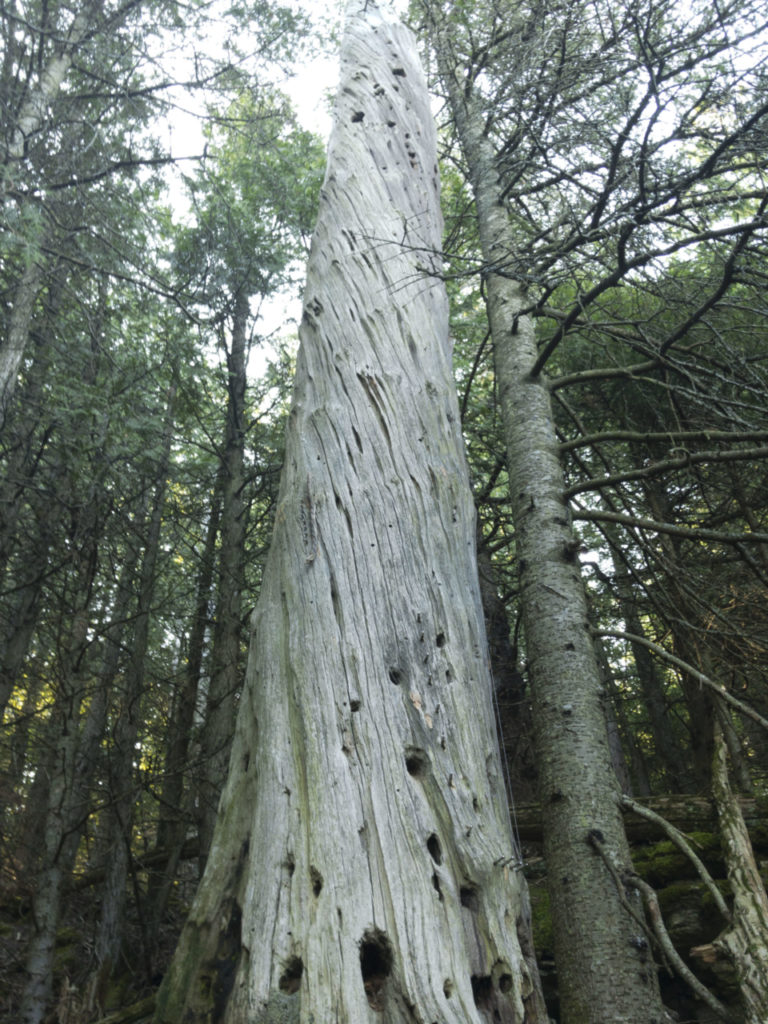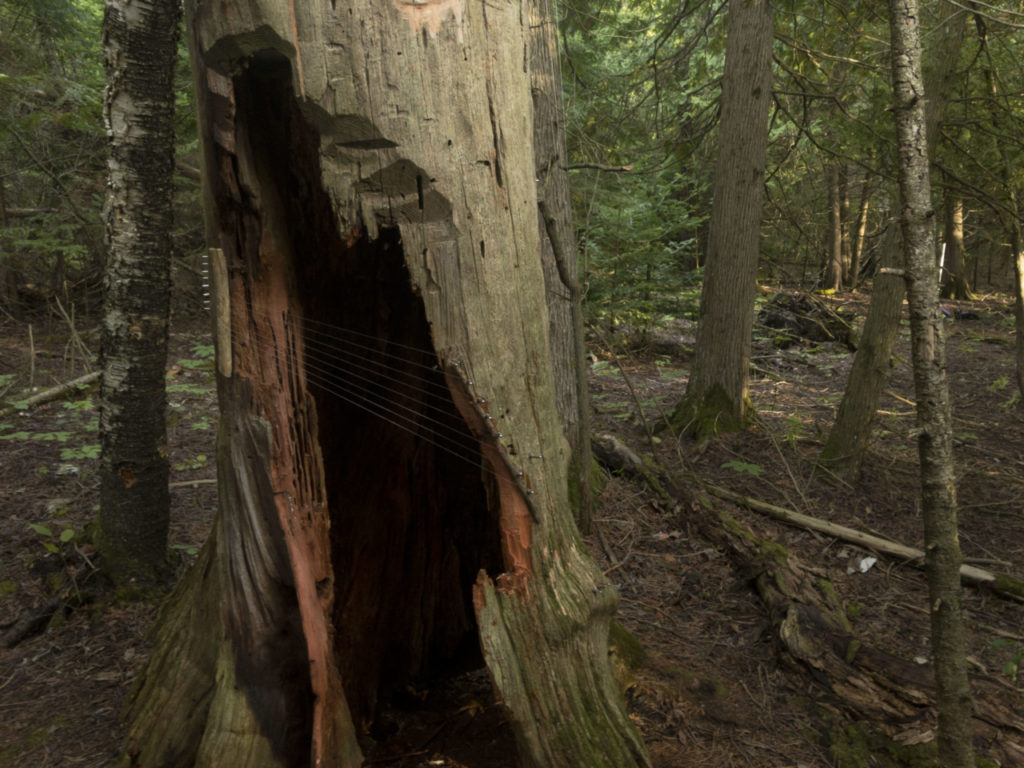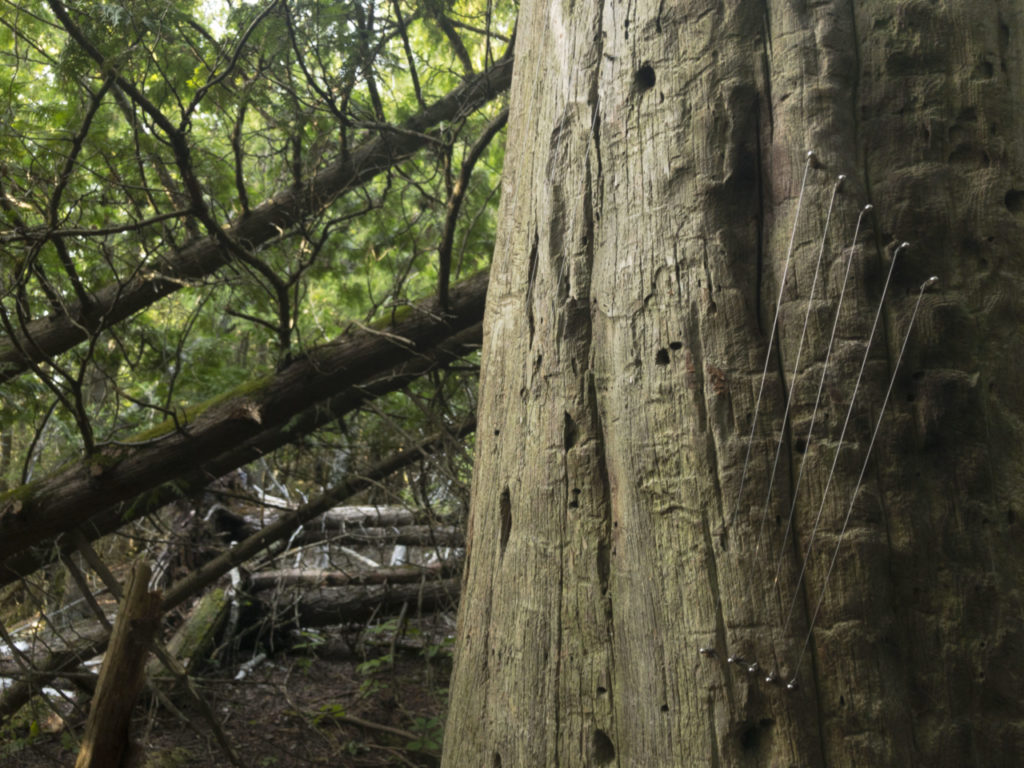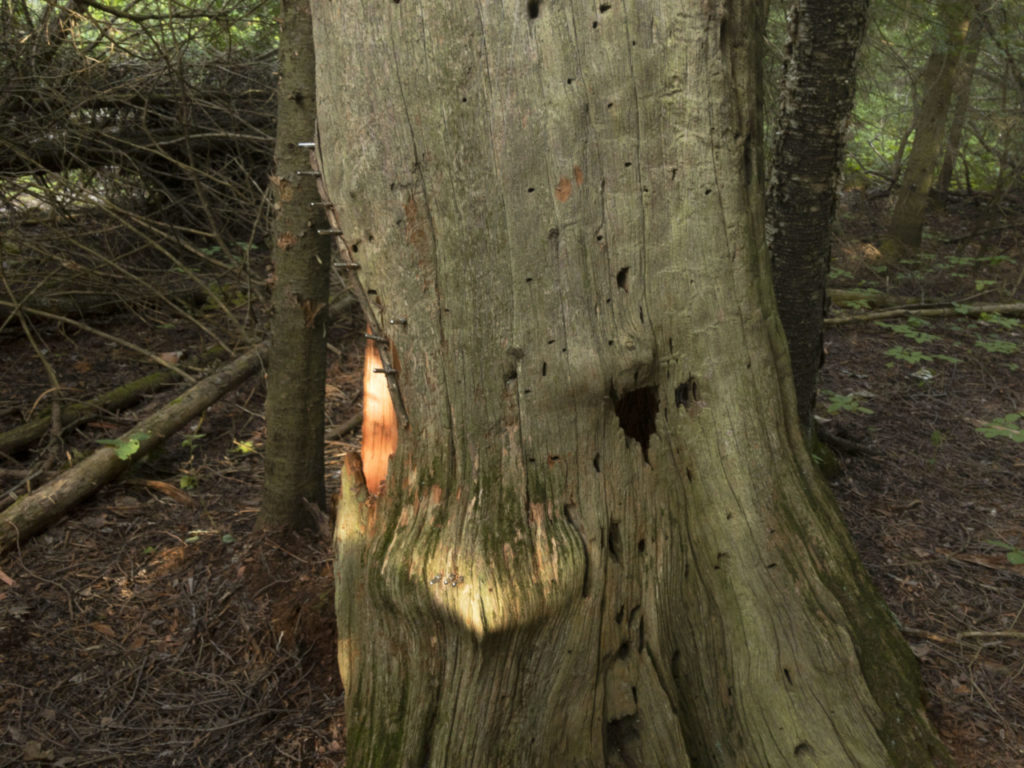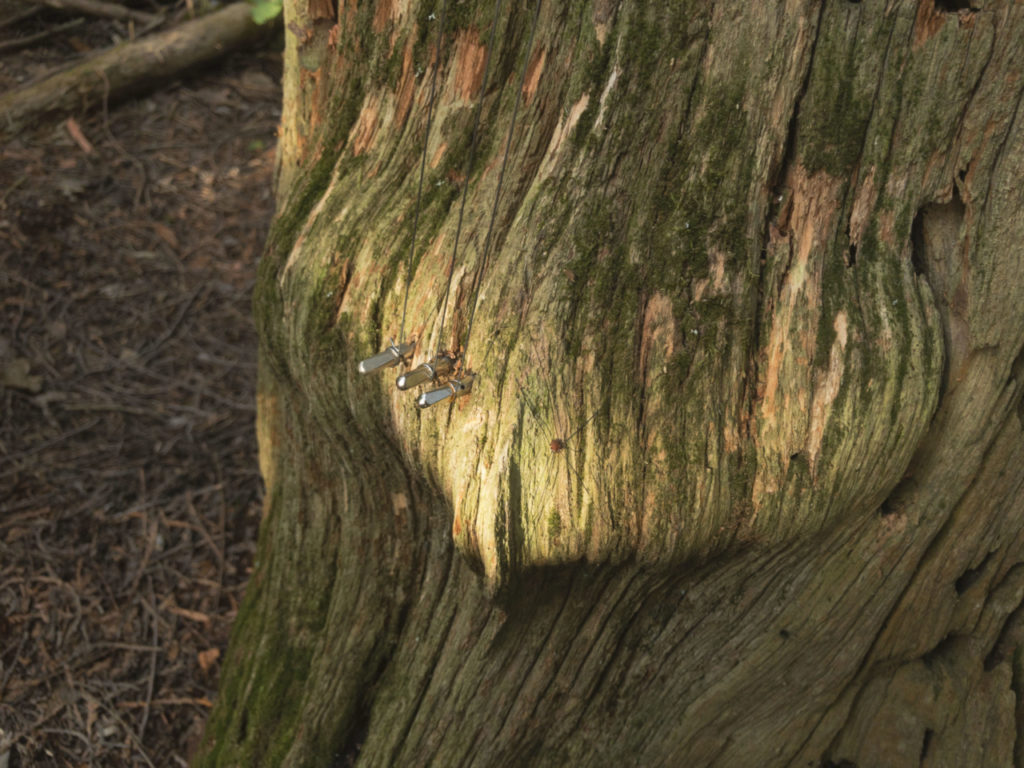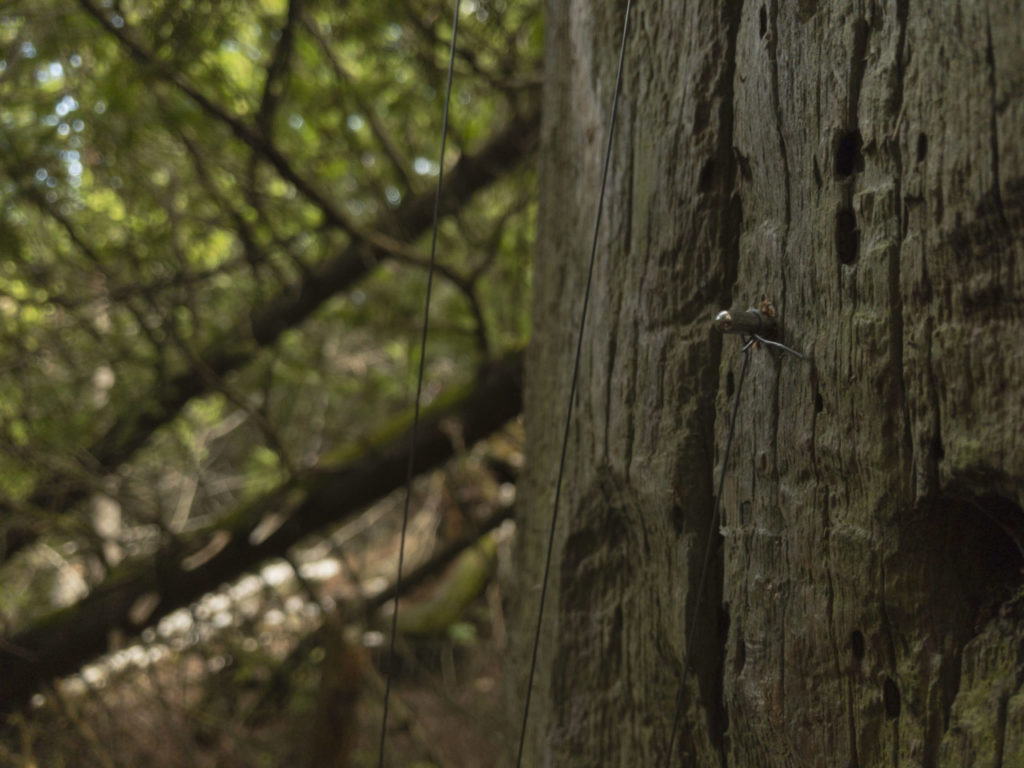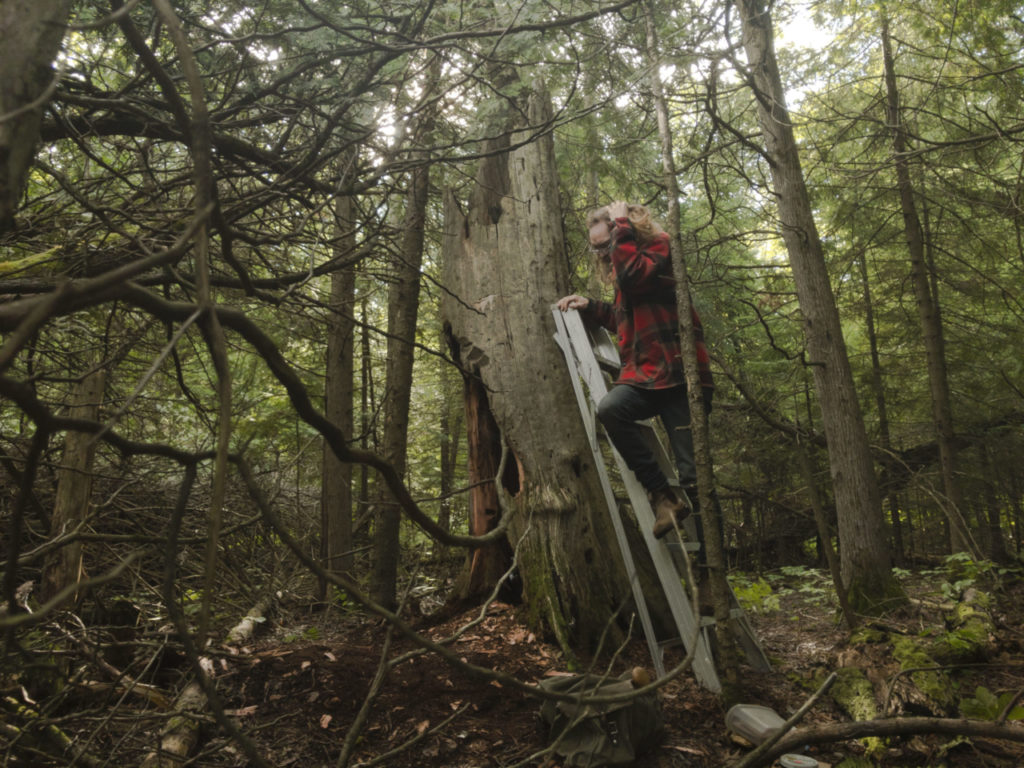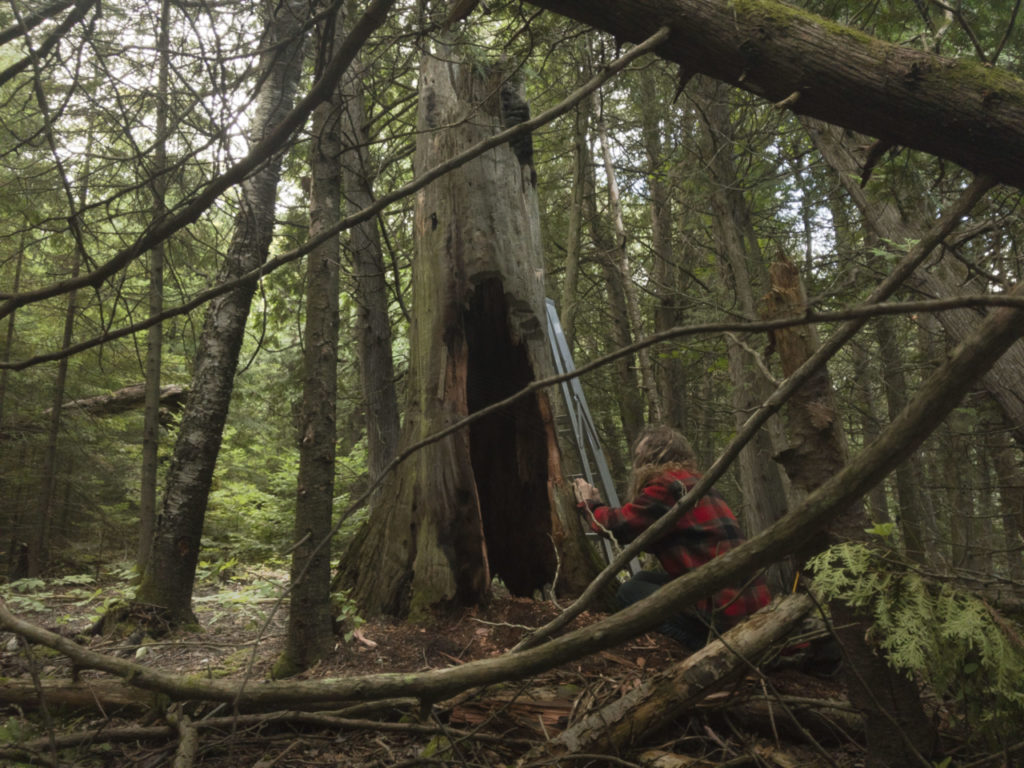
PROJECT
Sutartine are ancient chants thought to have been associated with pagan rituals as well as daily life and work in Lithuania. They are generally multipart vocal or instrumental songs with close harmonies inspired by the buzzing of bees and the trumpeting of swans. Folklorist Zenonas Slaviūnas collected hundreds of examples from men and women during a revival of the tradition, and he published his collections in 1937. In 2010, the tradition of sutartinė was given Intangible Heritage status by UNESCO. As folk musicians, Jurgita and Matti strive to maintain the living tradition by studying the style in both a historical and contemporary context.
Matti spent his childhood summers on Manitoulin Island, and many days were spent cutting firewood and timbers from the woodlot of the farm his family owned.
The woodlot is perched at the top of the Niagara escarpment that runs along the island’s north shore. For this project, Matti and Jurgita found several cedars and other trees hidden in parts of the escarpment where Matti had never been.
The number of charred cedar stumps was surprising. Further research revealed that a huge fire spread across most of Manitoulin in 1888, drastically changing the landscape and ecology of the island. The cedars are the only relic remaining from the fire as the forest regenerated around them. Over the years, many of these stumps have been used for firewood in all but the most inaccessible areas of the escarpment.
Cedars are incredibly resistant to rot, so they are ideal for constructing treeharps. The tree must be hollow enough to resonate well, but strong enough to hold the strings. After measuring each tree, the number of strings and their tension are worked out mathematically.
This project was supported by the Lithuanian Council for Culture.
Dijūta Kolnali, Dijūta Berželi
Dijūta the mountain, Dijūta the birch tree
Tūto dijūto, Tūto dijūto
Dijūta kolnali, Dijūta berželi
Tūto dijūto, Tūto dijūto
Dijūta kolnali sutartine is ideal for teaching as an introduction to the tradition, because it is thought to be quite archaic, and does not have a lot of words. One of the first sutartines that we sang together was very similar to this one, so when we found this in the archives, we had the idea to make an arrangement using four different songs. The word Dijuta likely refers to the Dijokalnis mound, which was reported to Slaviunas as a traditional pagan site.
There are several ledges along the limestone escarpment of the property where we recorded these videos. This tree is near the top of the escarpment, leaning against the rock face. This makes it a great spot for squirrels to run from one level to the next, which we discovered while recording.
Ko, Tu, Kad berželi
Lioi, why you, birch Lioi, are you not growing?
Was not the will given to you?
By the winter, will was not given?
By the summer, will was not given?
Why are you not growing,
Why are you not leafing?
Lioi, ko tu berželi, Lioi, ko neaugai, Lioi, ko neaugai?
Ko tu, kad, berželi, Ko neaugai, lylia, Ko neaugai, lylia?
Kas gi tau valalas, Valalas nedeve, Valalas nedeve?
Argi tau žiemela, Valalas nedeve? Ko neaugai, lylio?
Argi vasarėla, Valalas nedeve? Ko neaugai, lylio?
Ko tu, ko, berželi, Ko neaugai, lylia, Lapelių neklostei?
This is one of the first sutartine we learned. When sharing Finnish and Lithuanian traditions, we noticed common connections. The birch tree is a symbol found in both in the Kalevala and in Lithuanian folklore. Our first project was to create the shadow puppet show “Ko tu koivu” which combined this sutartine with poetry from the Kalevala tradition.
Most of the escarpment is difficult to access with thick brush and steep rock faces. This tree is found in one of the few spots where the hill is relatively shallow, opening up to some beautiful scenery.
Mano Vainykas, Jurdabra
My wreath,
Hard earned
I collected the flowers
In the pinewood
I wove it
In the forest clearing
My legs were freezing
I blew hot air
Mana vainikas, judabra
Sunkiai pelnytas, judabra
Šilaly rinktas, judabra
Trakely pintas, judabra
Šalau kojelas, judabra
Pučiau rankelas, judabra
Judabrėla, judabra
Judabrėla, tatato
Sutartine’s are polyphonic chants that are normally sung with 2 to 4 voice parts. Two-voice sutartines such as this one usually contain musical elements that are unconventional to western listeners. We usually find that we are drawn to the close second harmonies and syncopated rhythms. 3 and 4 part sutartines contain spaces so that the individual nuances of each voice are revealed, and singers can catch their breath. We often adapt 3 or 4 voice sutartines, but they lose this interesting texture.
Dūno upė
Duno, Duno river
Duno river, lylio, Deep lake.
Duno river, lylio, In the lake,
Duno river, Lylio, The duck is swimming,
Duno river, lylio, And my brother.
Duno river, lylio, In the lake
Duno river, lylio, Swims plenty of fish.
Duno river, lylio, Fishermen will come,
Duno river, lylio, They will catch the fish.
Duno river, lylio, There are many fish.
Dūno, dūno upe
Dūno upe, lylio, Gilus ažerėlis.
Dūno upe, lylio, Tami ažerėly,
Dūno upe, lylio, Plaukia untinėlis,
Dūno upe, lylio, Ir mana bralalis.
Dūno upe, lylio, Tami ažerėly,
Dūno upe, lylio, Plauka daug žuvelių.
Dūno upe, lylio, Atais ribakėlis,
Dūno upe, lylio, Išgaudys žuvelas.
Dūno upe, lylio, Daug yra žuvelių.
Our plan for the project was to play each sutartine on a single tree. When we found these two stumps within earshot of eachother, it opened up the possibility of singing sutartines where the voices hit the same note simultaneously. The forest is quite dense in this location, so it is difficult to see that it is quite close to the Lake Huron shore.
We planned on recording a different song on this morning, but the waves were so loud that we decided to record this one instead, with the crashing waves becoming a third voice in the recording.
Dijūta kalnali
Dijūta the mountain, Dijūta the mountain
Dijūta kalnali, Dijūta kalnali
This is the first sutartine that we learned together. It is one of the most common sutartines sung in large gatherings in Lithuania. It is a good example of the mathematical structure of sutartines, as the rhythm of the second section is exactly the rhythm of the first part backwards. The words are very simple, likely referring to the Dijokalnis fortress hill in Lithuania.
A typical fortress hill is 40-50 metres high, and this section of the Niagara escarpment in Canada is also 50 metres high, although the landscape is quite different.
Labus vakarus
Good evening, Judabra totata,
Eve, Judabra totata.
— What are you searching for, What are you looking for?
— We are looking for boys, guys
— Guess his name, name
— Anthony is his name, Tony
Labus vakarus, Judabra totata,
Vakarėlis, Judabra totata.
— O ko jūs ieškot, Ko žvalgaujat?
— Bernelių ieškom, Bernužėlių,
— Spėkit vardelį, Vardelėlį,
— Antanas vardu, Antaniukas,
The first sutartine we learned with both voices singing several verses. The sutartine is associated with a guessing game played by young girls. We had arranged the sutartine for jouhikko when we were first exploring the Honeypaw sound. Listen here>>
Gegutė sode, sode kukavo
Cuckoo bird in the garden,
In the garden was cuckooing
Cuckoo bird has grey,
Grey feathers.
Cuckoo is a lovely
Lovely bird.
Cuckoo has a sharp,
Sharp voice.
Ū-ū-ū!
Gegutė sode,
Sode kukavo.
Gegutės pilkos,
Pilkos plunksnelės.
Gegutė meilus,
Meilus paukštelis.
Gegutės skardus,
Skardus balselis.
Ū-ū-ū!
The first six videos were made in July 2020 on our first trip to Manitoulin Island. Those videos were recorded live, with limited video and audio editing because each microphone captured all of the sound. For the final three videos made in August, we decided to record the tree harp and the singing separately, and film the video afterwards. It turned out that less audio production was required because of better mic placement.
This sutartine describes the beautiful feathers and voice of the cuckoo bird. Not to be left out, a loon started calling during the tree harp recording. When we returned the next day to film the video, we discovered that the porcupine we had been seeing lived in a cave next to the harp. We chose this location not for the tree itself, but because the area seemed to have a magical quality to it.
The tree harp is constructed on a dead cedar on the Niagara escarpment on Manitoulin Island. This tree lived more recently than the others used for this project. Because the hollow portion of the tree was small, we used loop end strings to tie them to a branch. This method accentuated many different harmonics, almost overpowering the fundamental frequency.
Aš pasėjau apynėlį
I sowed hops in my father’s garden.
Dobile, dobiliutėli, Dobile.
And the hops grows in my father’s garden.
And there bloomed beautiful blossoms of green hops.
I will take off the beautiful flowers of my hops.
I will make beer for the gathering, I will make the guests drunk.
I will make the guests drunk with the green wine.
Aš pasėjau apynėlį, tėvelio sodelyj.
Dobile, dobiliutėli, dobile.
Ir išaugo apynėlis tėvelio sodelyj.
Ir sukrovė gražius žiedus, žalias apynėlis.
Nuraškysiu gražius žiedus, savo apynėlio.
Talkai alaus padarysiu, svečius nugirdysiu.
Visus svečius nugirdysiu, žaliuoju vyneliu.
Sutartine are generally structured so that two melodies of the same length are juxtaposed so that the melodies and rhythms play against each other. This sutartinė was field collected with a few extra beats in one section, likely in error. When we were playing through this sutartinė, we saw two obvious ways to interpret the rhythms to make the two sections the same length by shortening or lengthening some notes. Having played a lot of Balkan music, we decided to shorten certain notes giving the sutartinė a regular 7 beat phrase.
The tree harp was constructed from a dead cedar tree on Manitoulin island. This tree has a prominent spiral shape, and is structurally sound enough to support the eight melody strings and four bass strings. The lowest C string is over two metres long.
Turėjo liepa devynias šakas
Linden tree had nine branches.
Čiutala, čiutata, čiutata, čiutata.
– The brothers cut all nine.
– Leave, brother, at least the ninth
– For the cuckoos to call.
Turėjo liepa devynias šakas.
Čiutala, čiutata, čiutata, čiutata.
– Visas devynias brolaliai kirto.
– Palik, brolali, nors gi devintų
– Nors gegutėlai pasikukuoti.
When we first started playing Baltic psaltery together, we began to notice more connections between Finnic and Baltic language and culture. In this sutartinė, our brothers are cutting a Linden tree with an axe (Lit: Kirvis/Fin:Kirves). We ask them to leave one branch for the cuckoo to sit on. Similarly in Finnish mythology, the creation of agriculture is symbolized by the hero Väinämöinen cutting trees to plant grain fields. He is careful to leave one tree standing for the cuckoo’s perch.
It would have been quite a sight after the great fire of 1888 to see little remaining of the forest but these cedar stumps. This beautiful cedar stump was tall enough to install bass strings up to 180 cm long. There are markings on it where someone has cut some kindling with an axe at some point.
